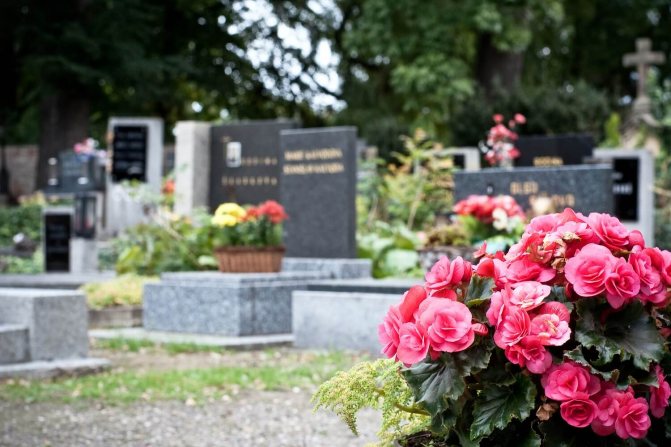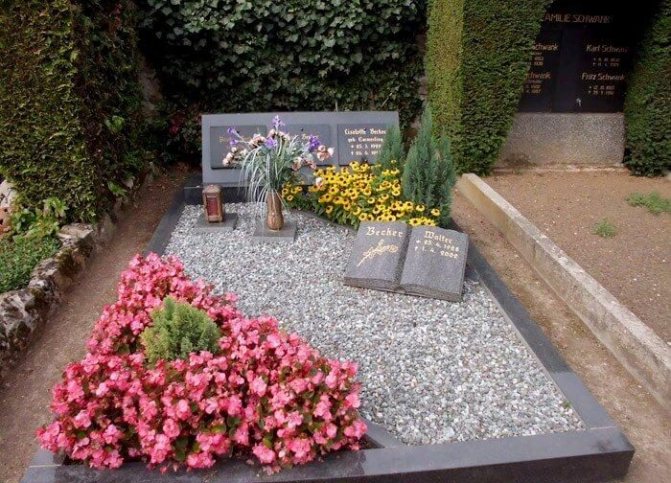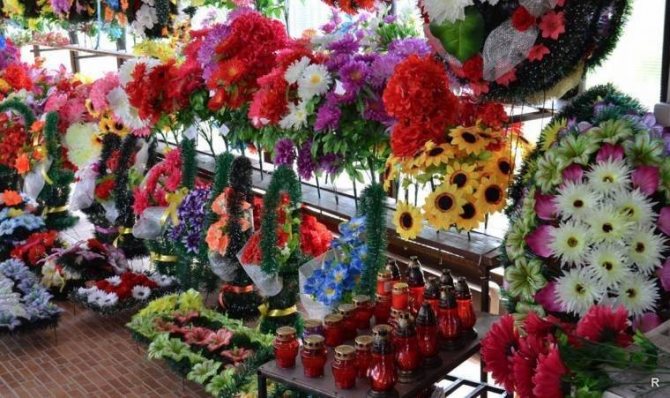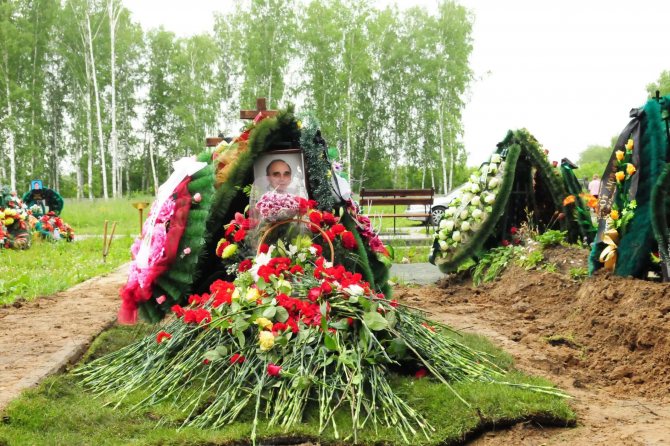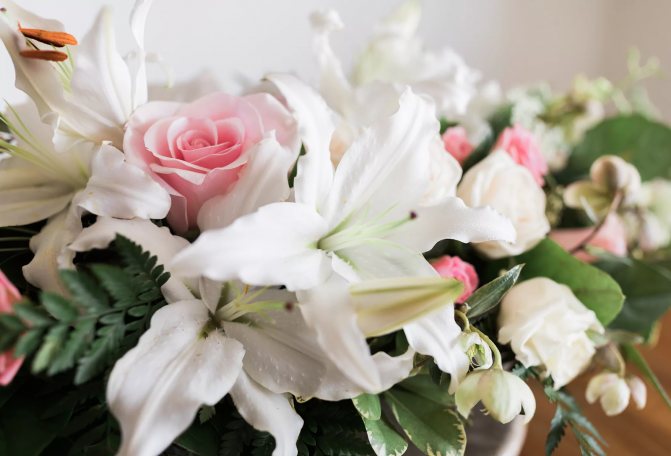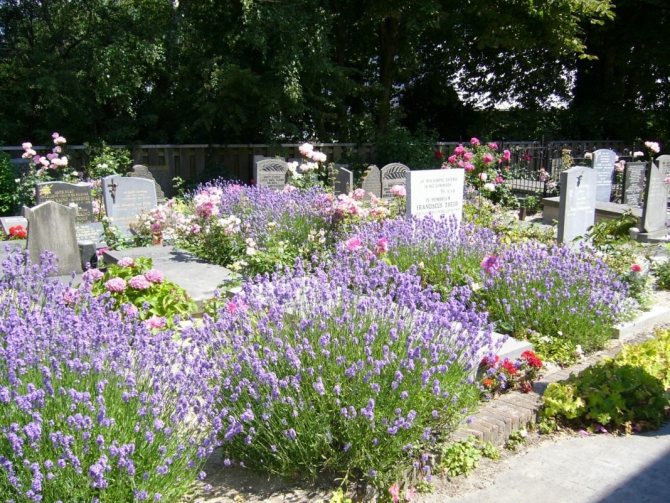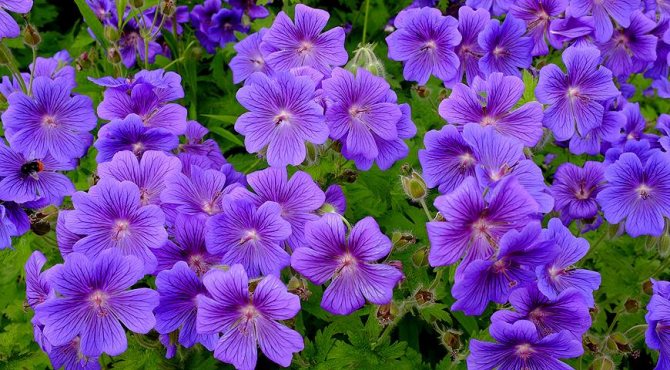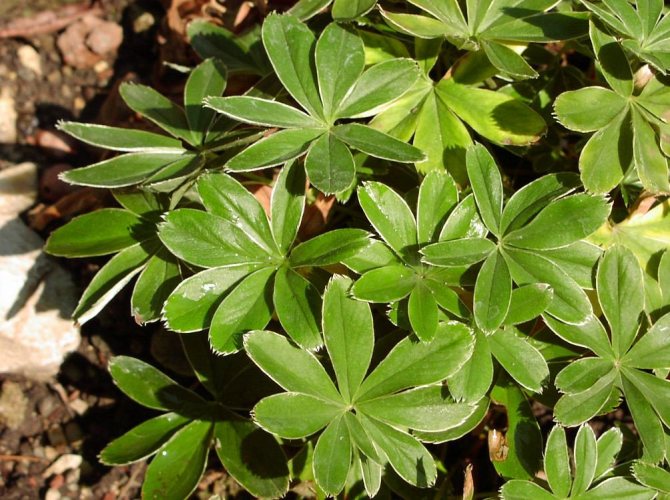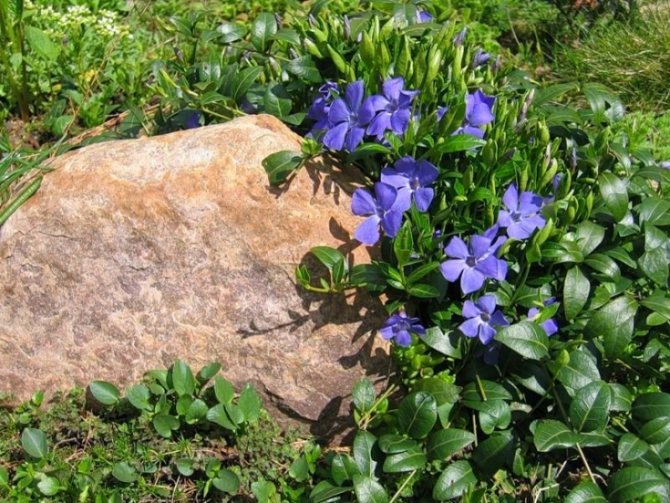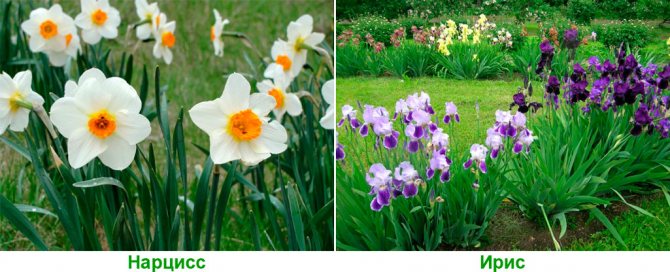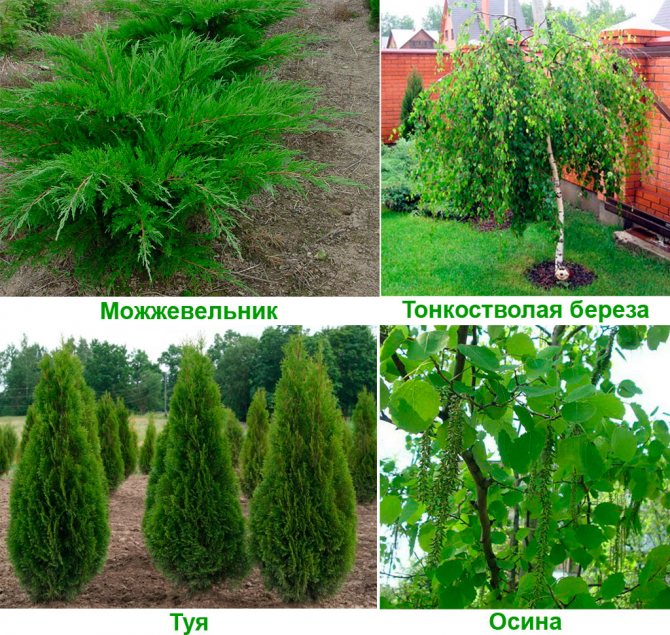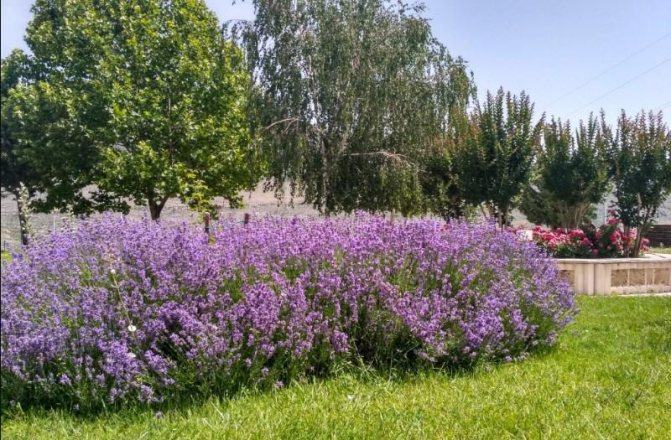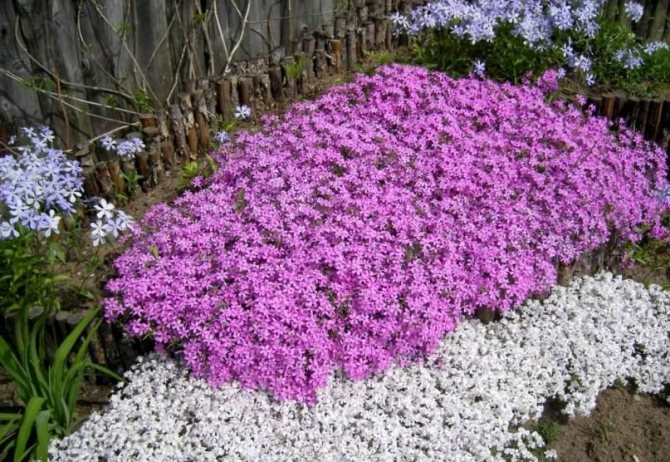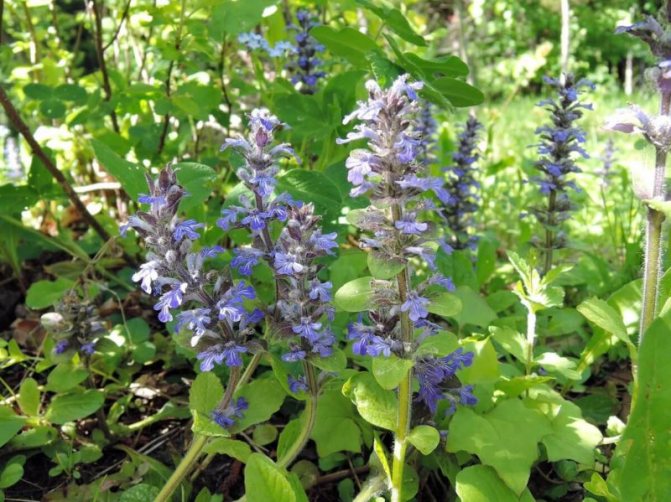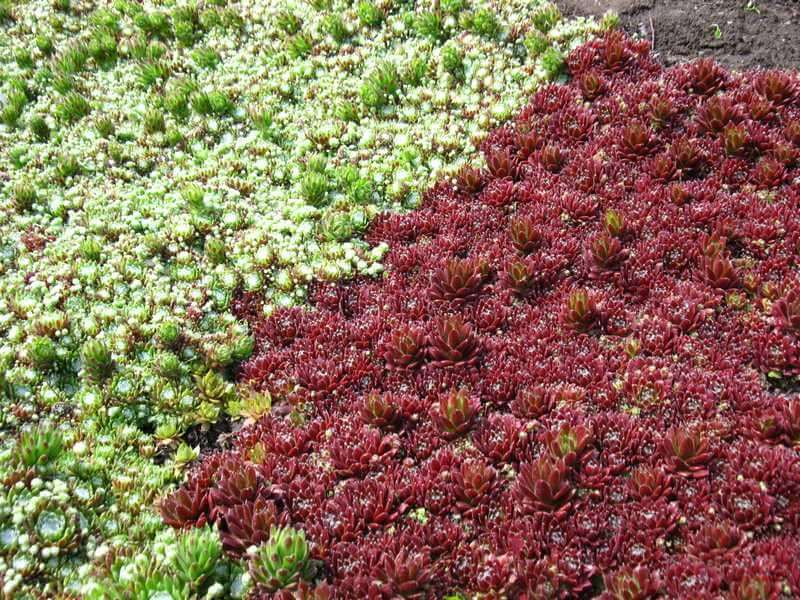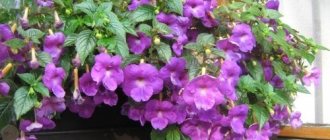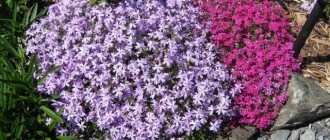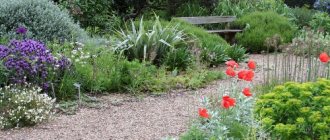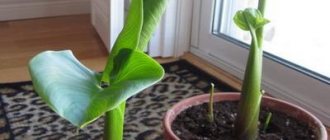Honoring graves with bouquets is a centuries-old ritual that has been passed down from generation to generation. Choosing a flower arrangement becomes a reverent procedure, because the bouquet reflects our feelings and attitude towards the dead. But how do you choose the right flowers for the dead? Are there any rules, unspoken requirements?
When choosing floral ensembles, relatives often have doubts. Moreover, this is relevant both for bouquets for living people and for ritual obeisances to memory. However, in the latter option, they rarely hesitate over the choice. There are certain taboos on plants for cemetery areas and donation to the living.
Many are interested in what flowers are placed on the grave? Is it permissible to leave cheerful bouquets of bright colors there? Choose live or artificial plants? How many shades are allowed in a bouquet? What flowers can you wear in a cemetery? These and a number of other questions are asked every day. The answer to them will be one simple rule: choose only what your heart tells you.
What flowers to plant on the grave
When choosing flowers that will grow in a cemetery, you should take into account the following points:
- the location of the grave (in the sun or in the shade);
- what is the earth in this place (clay, sand, black earth);
- the frequency of trips to the cemetery, and if they are infrequent, you should give preference to unpretentious, drought-resistant, frost-resistant and perennial crops with good immunity to diseases;
- on the graves it is better to plant not exotic, but ordinary plants, since beautiful flowers can, unfortunately, be stolen.
It is believed that the burial site should not look colorful, but strict and solemn. At the same time, one must take into account who is buried in this grave, his lifetime preferences.
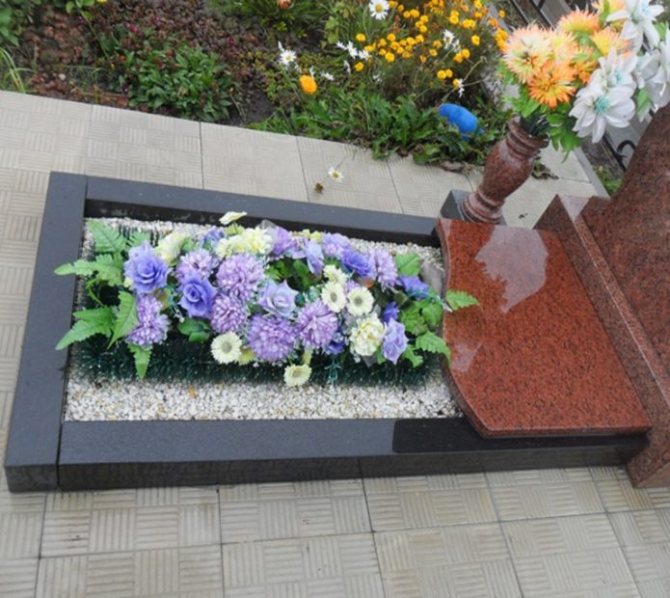
The burial place should be strict and solemn.
To decorate the graves, the following are used:
- perennial plants creeping along the ground, with the help of which a continuous covering is created;
- annuals or perennials used as seasonal accents, living bouquets that adorn the grave in certain months of the year.
Both flowers will fill the empty space around the monument, cover the soil with a green carpet and prevent weeds from breeding. You need to choose crops that will look beautiful not only during flowering, but before and after it, will provide a long-lasting decorative effect.
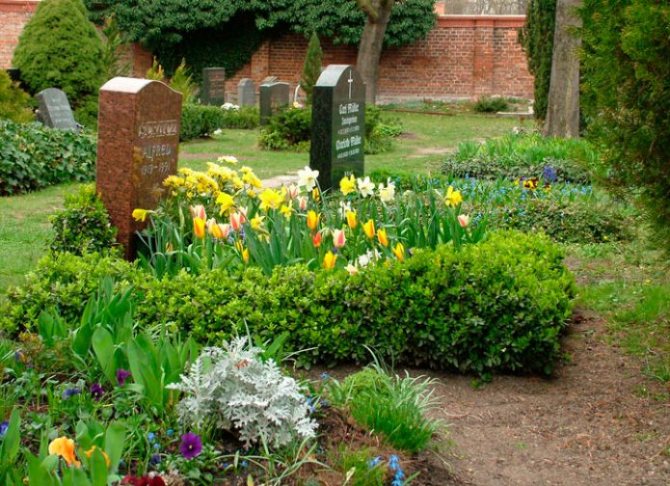

Ground cover and seasonal flowers are used to decorate the graves.
Groundcover flowering plants
Flowers that cover the earth with a dense carpet include:
- Periwinkle. It is unpretentious, it can be planted on a grave located both in the sun and in the shade. The plant is evergreen, with glossy dark green leaves and blue (purple) flowers. Many peoples consider periwinkle to be a memorial, symbolizing eternal memory.
- Phlox subulate evergreen. It forms a thick covering on the grave. Flowers pink, white, purple, red appear in large numbers in the summer season twice: at the beginning and at the end of it. These plants are drought tolerant and do not like excessive moisture. They prefer bright places, depleted soil. When planted in fertile black soil, phloxes form many green leaves and few flowers.
- Woolly Stachis (Byzantine chisetz). It is undemanding to the soil.The very first plant opens its leaves, and then covers the soil with a noble silvery-velvety carpet. Stachis blooms in May. Looks equally good in the sun and partial shade.
Photo gallery: ground cover flowers
Flowers for seasonal accents
It is possible to create a continuous flowering sequence in a cemetery using seasonal flowers. Bulbous or other plants planted on the grave during their flowering period will serve as bright accents. Like living bouquets, they will decorate the burial place in memory of the dead people.
Traditionally, marigolds are planted in the cemetery. In addition to the fact that these flowers are beautiful, they look neat, they bloom all summer long, they, according to popular beliefs, protect souls from the intrigues of evil spirits, black magic.
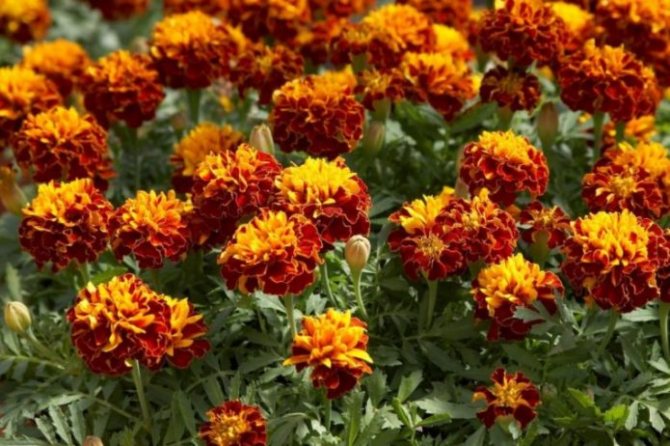

Marigolds protect the soul from evil spirits
The following perennials can also be planted in the cemetery:
- Iris. Grows in separate bushes, has thin flat leaves and single flowers of blue, lilac, white, purple tones. Such crops are unpretentious, they can bloom all summer and with a lack of moisture. They are often raised on graves and even called the flowers of the dead.
- Primrose. It is characterized by endurance. The plant is unpretentious, undemanding to the composition of the soil. An irreplaceable flower for shaded areas, especially flooded in spring by melt water. During the flowering period, inflorescences of various shapes (in the form of a ball, umbrella, pyramid) with flowers of white, burgundy and other tones are formed.
- Lilies of the valley. These delicate bell-shaped flowers like to grow in partial shade or shade, are not selective for the soil.
Photo gallery: perennials
Often on the graves, pansies are planted, a symbol of memory and humility. These delicate and compact flowers begin to bloom before the beginning of May and bloom all summer.
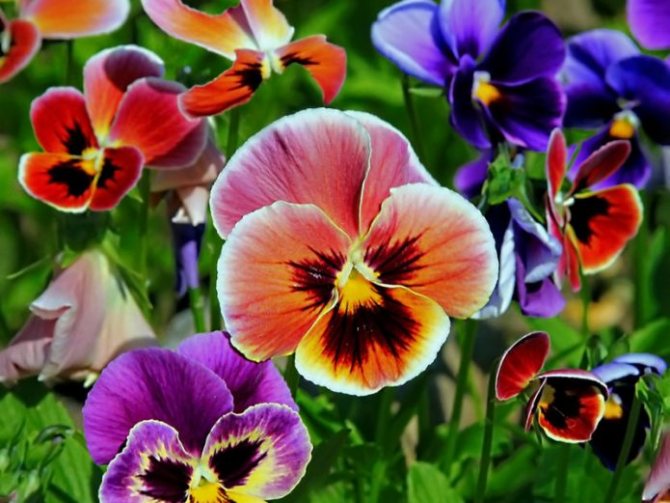

Pansies - a symbol of humility and memory
Appropriate to grow on graves:
- Hyacinth. It belongs to perennial bulbous plants and blooms in early spring, at such time on bushes reaching 30 cm in height, cone-like white, pink, blue, lilac panicles with flowers are formed. Hyacinth can be grown in the shade, it tolerates excess moisture well during the rainy season.
- Narcissus. Undemanding to special care, the delicate white or white-yellow flower begins to bloom in late April - early May. And when flowering stops, the short bushes can create a good backdrop for neighboring crops that bloom later.
- Forget-me-nots. Pleasant and pretty, they reach a height of 10-40 cm. Often their flowers have a blue or blue tint. Forget-me-nots bloom from May to mid-summer.
- Daisies. They are small bushes with a leafless stem, rounded basal foliage, simple or double flowers. They are perennial and annual. These are light-loving flowers that can be grown in half-shaded areas.
- Turkish carnation. It is a herbaceous biennial, reaching a height of 30–75 cm. Loves the sun. Flowers can be simple or double. Their color can be pink, white, red, bicolor. Flowering continues throughout the summer.
Photo gallery: flowers for the cemetery
Peonies look beautiful in the cemetery. My deceased grandmother has lupine growing on the grave, it has grown a lot. If it is impossible to visit the cemetery often, planting such a flower is a good way out.
In ancient times in Russia there was a tradition to plant strawberry bushes on graves. The ripe berries were eaten by birds, which was considered a symbol of sadness for the deceased.
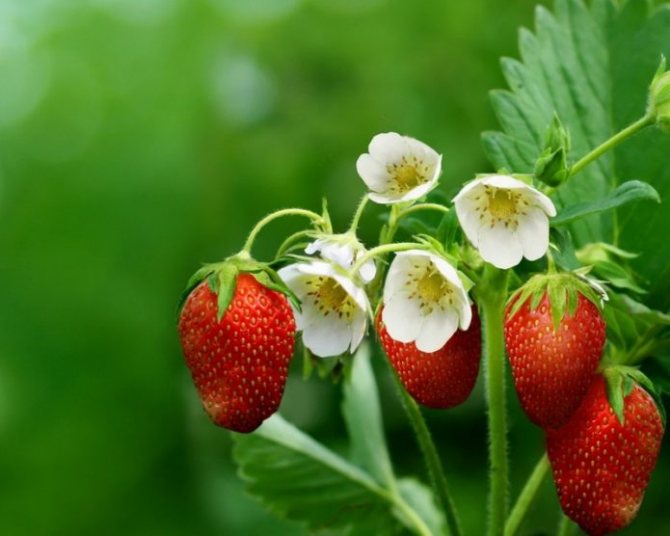

According to a long tradition, strawberry bushes were planted on graves.
From the above flower cultures, you can choose those that are better suited for decorating the burial place of a loved one and will become a tribute to the memory of the deceased.
Since ancient times, people have honored the memory of the dead by placing flowers on the graves.Some bring live, cut or artificial bouquets with them in their hands, others prefer to break up flower beds of beautiful perennials, which belong to the group of unpretentious crops, drought-resistant and shade-tolerant. Therefore, the question arises as to what flowers can be planted in a perennial cemetery.
Best options for flowering perennials for a cemetery
When choosing flowering plants, it is advisable to give preference to those specimens that look aesthetically pleasing even after their flowering time is over. Check out flowering perennials that are suitable for grave planting.
Periwinkle
A perennial groundcover with single, blue or purple flowers with five petals. The stems of the plant have short internodes and grow from 25 to 30 cm. Flowering begins in early spring and continues until autumn frosts.
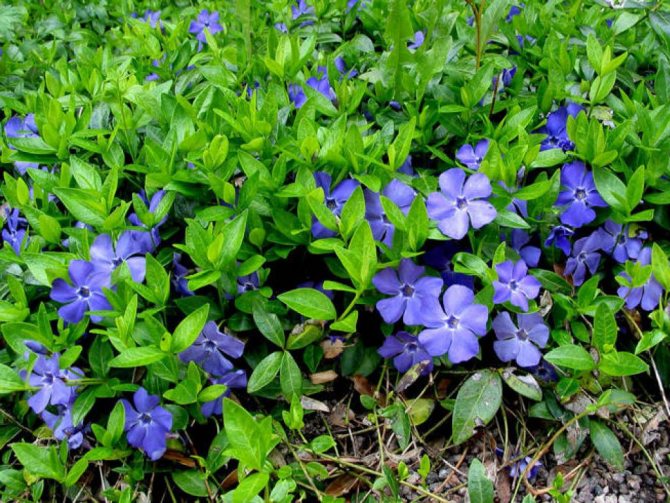

Blooming periwinkle covers the soil with a solid carpet of flowers and leaves
The plant is not capricious and viable, withstands shady conditions and bright sun. Its root system is able to find and draw moisture from the soil even in drought. Periwinkle is undemanding to the composition of the soil; it will grow compact on infertile soil and will not aggressively invade the surrounding territories.
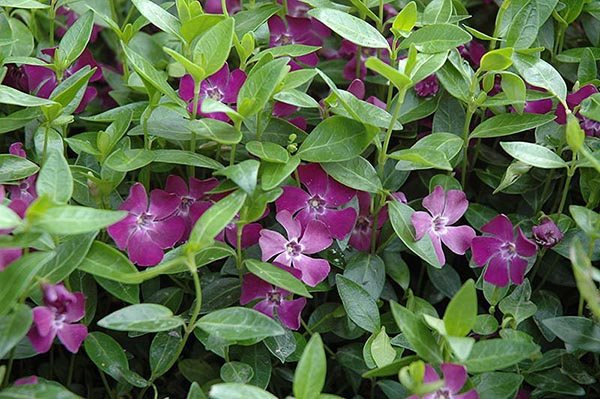

Variety of periwinkle, whose petals are purple
The plant propagates by cuttings, and its seedlings are grown from seeds. For cuttings, the upper part of the shoot with 2-3 internodes is cut off and planted in the ground. Young cuttings take root quickly. Cuttings are planted at the end of summer, so that after winter the plant will actively start growing. Seeds for seedlings are sown in February, and grown seedlings can be transferred to open ground in May. For the winter, young plants are recommended to be covered with fallen leaves so that they do not freeze. Adult plants do not need these precautions.
Carnation herb
Perennial plant with graceful thin stems and single flowers 1.5–2 cm in diameter. Serrated petals can be white, pink, or dark cherry in color. It grows on sandy soils, the stem height reaches 40 cm. The plant forms small bushes through which air flows easily pass. The roots of the flower are thin, they do not lie too deep in the soil.
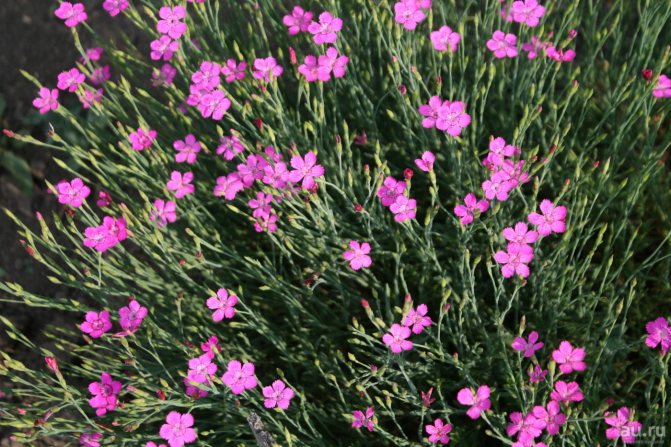

Carnation herb forms light sparse bushes that move when the wind blows
The perennial blooms profusely from June to the end of August. The seeds of the herbal clove begin to ripen in July and the plant can reproduce by self-seeding.
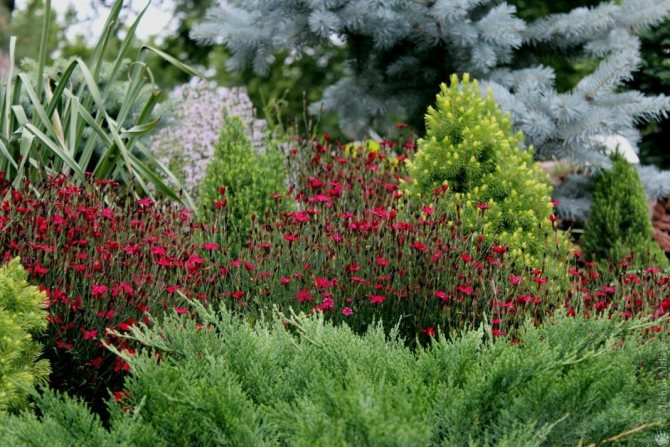

Next to evergreens, the carnation herb looks appropriate and attractive.
A feature of the herb carnation is its resistance to cold, it can withstand frosts down to -35 ° C. The flower does not require special care, grows without fertilization, but does not like swampy and acidified soils. Prefers well-drained high and dry areas, can grow in partial shade conditions. Every five years, the herb carnation bushes are renewed, replacing them with young plants. Planting material is obtained from seeds that are sown in March, germinated in a greenhouse, and then transplanted into open ground in May.
Narrow-leaved lavender
An evergreen perennial herbaceous shrub. The leaves of this variety are small, gray-green in color. Inflorescences form in July, their color can be blue, purple, with pink or burgundy hues.
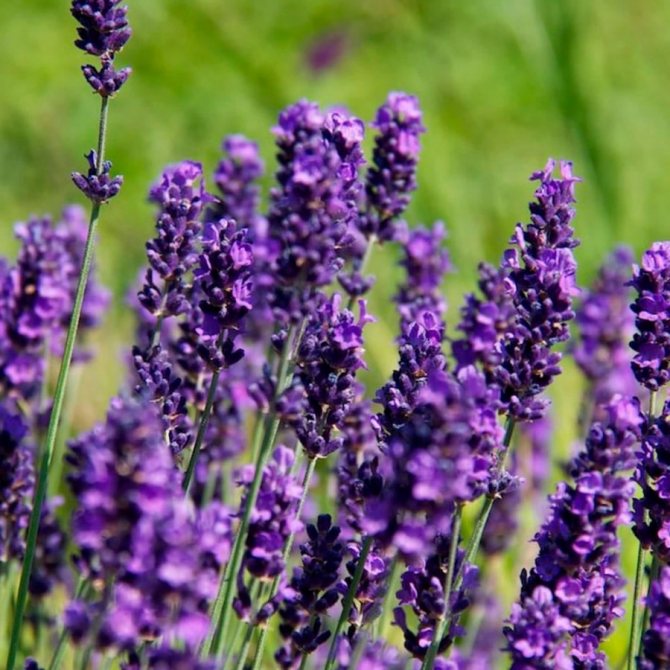

Narrow-leaved lavender - perennial with fragrant and attractive buds
The narrow-leaved variety is unpretentious, it can winter under the snow and not freeze out at the same time, it tolerates the bright sun well. The plant prefers light, dry soil. During the dry period, perennials need watering, the rest of the time the strong root system of lavender produces moisture on its own.
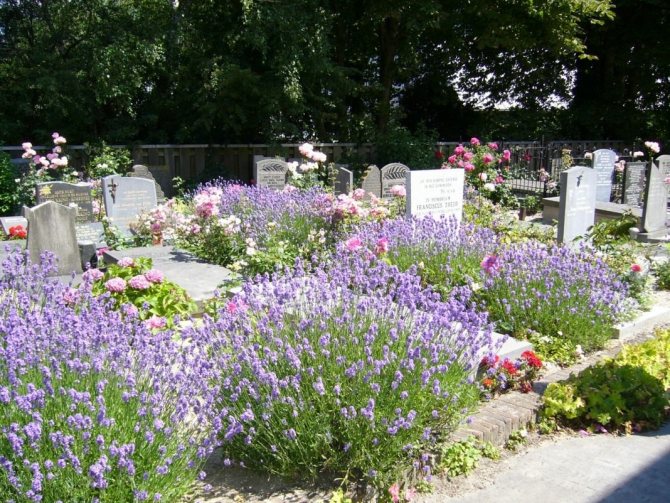

Blooming lavender bushes modestly and concisely decorate the tombstones
In the fall, when the lavender bushes have faded, all inflorescences are pruned, rejuvenating the plants for the next year. In summer, the perennial grows rapidly, the diameter of its bush reaches 1 meter. The plant propagates by seeds or cuttings. The herbaceous shrub is resistant to disease, and because of the aroma of its essential oils, it is not susceptible to attack by pests. Lavender flowers are beautifully combined with roses, hydrangeas, evergreen shrubs.
Sedum
Herbaceous flowering perennial with fleshy leaves and a pink cap of inflorescences. The plant belongs to the jungle family and is a drought tolerant succulent. Stonecrop blooms in summer or autumn, but it looks presentable even outside the flowering period.
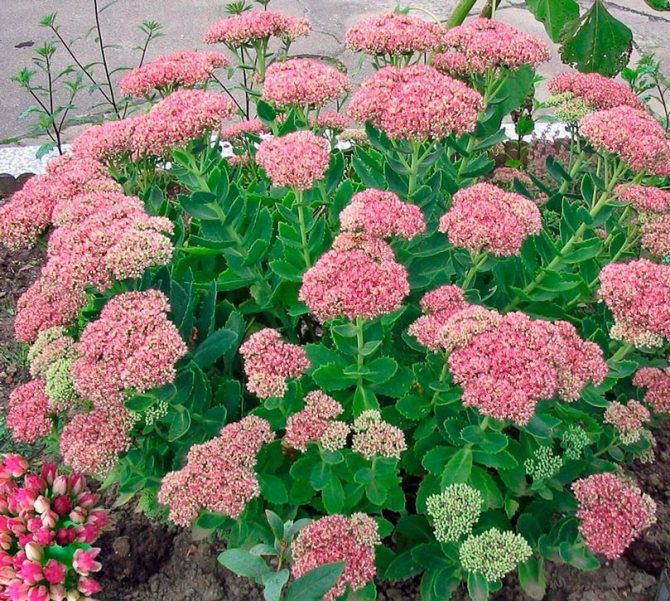

Unpretentious sedum looks especially impressive during flowering
Stonecrop grows under the bright sun or in partial shade. Any soil is suitable, even sandy or stony, but organic fertilizers are added to the hole before planting. It is necessary to specially water stonecrop only in case of prolonged drought, and the rest of the time it has enough moisture from summer rains.
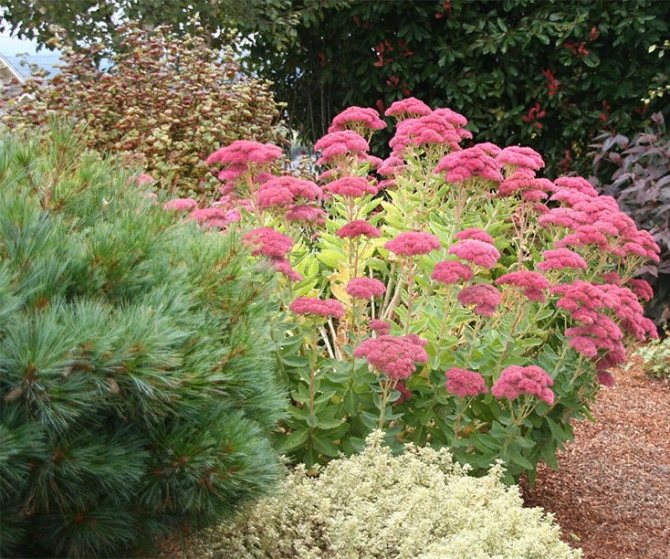

The sedum looks restrained and impressive, it combines beautifully with other plants
A perennial propagates by dividing a bush or by cuttings, less often it is grown from seeds. Stonecrop seeds in favorable conditions can germinate and self-sowing. Every spring, while caring for the grave, you will see fresh young plants - the perennial grows well. To grow stonecrop on its own, its seeds are germinated in a greenhouse since March, and seedlings are transferred to open ground in May.
Common heather
A branched low-growing herbaceous shrub 25–60 cm high. Stems are flexible, with small scaly leaves that remain green even in winter and do not fall off. During the flowering period, inflorescences are formed in the form of a brush with small pink or light purple flowers. Heather blooms in July and blooms until the end of summer. After flowering, its flowers do not fall, but dry up, and in this form they go under the snow.
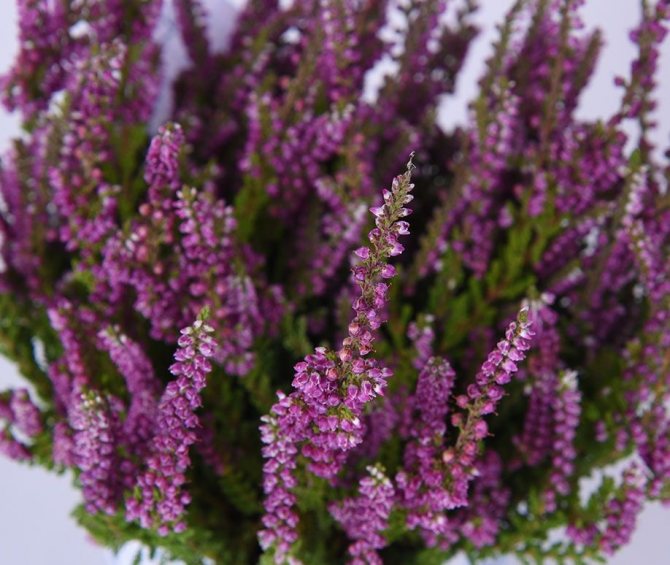

Blooming heather is an evergreen perennial plant
Heather grows in partial shade and in sunny areas. Dry, infertile soil is suitable for him. The plant propagates by dividing the bush, cuttings or seeds. Saplings are planted in May so that they have time to take root over the summer. With uncontrolled growth, the plant quickly fills the free space, so the variety needs autumn pruning.
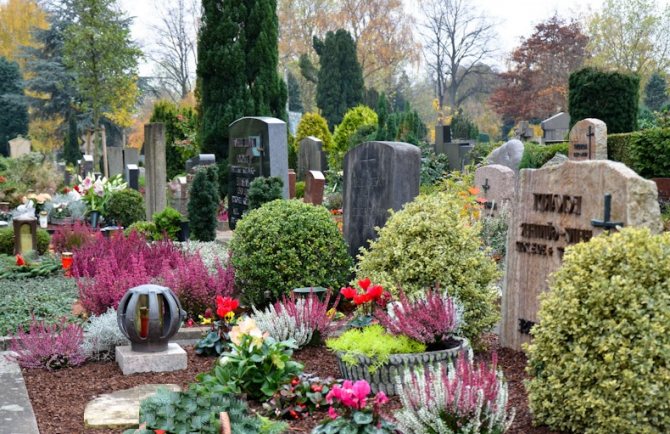

Blooming heather is used for planting in a flower garden on graves
The plant does not like excessive moisture in the soil and easily tolerates drought. Heather is also famous for being resistant to wind and frost. The decorativeness of the perennial is preserved all year round, and it does not require special care. Heather inflorescences can be in harmony with flowering and decorative deciduous plants.
Perennial flowers on the grave
Plants that can be planted on graves and around the cemetery have one thing in common: expressive beauty, at the same time simplicity and discreet form.
On a note. At the cemetery graves, most often you will find cute flowers that are familiar to everyone from childhood. There is no place for exotic artsy plants.
If you want to grow flowers on the grave, you should remember that it is not pretentiousness and showiness that is important here, but a sense of tact and proportion.
The color palette is of great importance. It is preferable to choose the main color silvery green and green. Accents are set using blue, red or pink colors. Warm sunny colors can also be used, but are rarely chosen.
Perennial flowers on the grave
First of all, when choosing plants, they are guided by an emotional factor, but one should also not forget about practicality, since crops have to develop and grow in a limited space.Most often in cemeteries there are sandy and sandy loam soils. Often there is no way to provide the required degree of loosening and drainage. This largely determines the answer to the question of what perennial flowers can be planted on the grave.
Important! To survive in such conditions, plants must be hardy and unpretentious. If you plant such crops, you will be able to create a beautiful flower bed that will not require excessive maintenance.
Funeral bouquet colors
When choosing a color scheme for a composition, you can rely on your taste or turn to traditions. Red flowers will symbolize the suffering experienced by the deceased, as well as the blood of Christ shed for humanity. The most neutral “funeral” color is white, which means infinity and purity. Compositions in such tones will be appropriate for the funeral of a man, a woman, and a child. Yellow flowers will accentuate your longing for the person who has departed.
The base of the bouquet is usually made up of branches of evergreen trees, meaning eternal life. Traditionally, bouquets in ritual floristry are performed in restrained and dark colors: black, purple, white, blue, lilac, burgundy. Bouquets of pink roses or cheerful yellow carnations may look out of place in the cemetery. It is believed that flowers that symbolize passion or tenderness have no place in a mournful event.
When choosing colors, you can be guided not only by your taste or traditions, but also by the preferences of the now deceased person. If you are sure that he loved pink roses the most, you can opt for such an unusual funeral bouquet. You can also collect an armful of wildflowers if you are sure that the deceased especially appreciated modest daisies. It is believed that even after death, it will be especially pleasant for a person to see loved ones who brought a bouquet of their favorite flowers to his grave. So we can show our respect for the person, care, which is shown even after death.
The flowers that will cause the least questions in the cemetery will be white lilies. Traditionally, they are used to decorate the most important moments in a person's life: this can be the first birthday, christening, wedding, and, ultimately, a funeral. Calla lilies, roses, carnations, alstroemeria are also actively used for a funeral bouquet.
Description of popular flowers for the cemetery
When choosing crops for planting on or near a grave, the first step is to determine the type of soil. This will help answer the question of what perennial flowers to plant in the cemetery so that they bloom all summer. The type of illumination of the territory is very important. If this is an open area, then it is preferable to plant sun-loving plants. For burials that are located near trees or buildings, shade-loving and shade-tolerant crops should be chosen.
Perennial flowers on the grave
Carpet plants
Cultures weaving along the surface of the soil look very beautiful on the graves; gradually they will grow and form a carpet.
A suitable plant for a cemetery is Borvinok. From the very beginning, the plant is covered with cute blue flowers. At the same time, the grave is covered with beautiful greenery. The disadvantage of this culture is its rapid growth; neighboring graves may begin to cover with borvinka.
Bunch flowers
Flowers that grow in bunches are good for planting in a cemetery. Among the most popular flowers are daffodils and iris.
Interesting fact. Since ancient times, it is irises that have been considered funeral flowers. They were constantly placed on the graves.
Such bunch flowers are placed as close to each other as possible, leaving practically no distance between them. But these plants bloom in early spring, by the end of June there is just greenery.
Pansies
A short flower that looks simply divine. It is a small bush (15-30 cm).Pansies offer a wide variety of colors. The main advantage of this culture is the long flowering period. They bloom at the end of April and delight with their beauty until the end of autumn.
Important! In order for abundant flowering to last throughout the season, you will need to periodically remove dry inflorescences.
Anemone, or Anemone
This is another long-flowering crop that comes in a wide variety of varieties. The undersized representatives should include the tender and ordinary anemone. This is a charming primrose that will delight you with flowering by the end of April. True, it will stop in three weeks, and the leaves will disappear by the end of May.
Tender anemone will delight you with white inflorescences resembling chamomile. No less beautiful is the common anemone, represented by purple, red or white bells. Among the people, common anemone is often found under the name primrose.
Carnation herb
These are perennial garden carnations, the height of the stems of which does not exceed 30 cm. Due to the thin delicate stem, the plant tends to adhere, which contributes to the formation of beautiful meadows. The flowers of this variety are not large in size, but they come in a variety of colors, ranging from white to bright red.
Unpretentious in care, it survives cold winters well. The seeds of the plant sprout well, and the culture also has a tendency to self-sowing.
Turkish carnation
The bright flowers of a garden carnation with jagged edges will decorate any flower garden of the grave with their flowering from the beginning of June. The flowers themselves are small, but collected in beautiful inflorescences. Flowering lasts from early June to late September. The height of the plant depends on the variety: from 40 to 60 cm. Grows well in sunny places and shaded areas.
Phlox
A very attractive option for a cemetery will be the thyroid phlox, the height of which does not exceed 15 cm. The plant spreads, forms beautiful early flowering meadows.
Another variety of this crop that can be used in a flower garden in a cemetery is sod phlox. These can be soil-covering varieties or flowers growing in bushes.
The plant grows with equal success in the sun and partial shade, but most of all it loves sunny, temperate areas. To organize long flowering, you will need to remove dry inflorescences in a timely manner. Also, the advantages of this perennial are unpretentious care and good frost resistance.
Cuff
A low plant (up to 45 cm) has spherical inflorescences of calm tones. In addition to beautiful flowering, funnel-shaped leaves are very attractive. They have the ability to retain water droplets on their surface. In the center of the lowered leaf in the early morning, dew drops remain, forming silvery balls.
The cuff blooms from June to August. With the timely removal of dry inflorescences, re-flowering is possible in September. If you place the cuff next to early flowering crops, you will be able to hide their wilting leaves with the beauty of this pleasant ball-shaped flower.
Crocuses
Another early flowering unpretentious flowers that are often found in cemetery flower beds. The plant is grown with bulbs that can withstand winter. Low plants bloom from March to May, appearing almost from under the snow. They grow equally well under the crown of trees in partial shade or in sunny areas.
Tulip
An equally common flower that pleases with early flowering and is practically one of the most unpretentious plants. Thanks to the thousands of different varieties of these flowers, great compositions can be created. You can also organize long-term flowering by selecting bulb varieties with different blooming periods.
Geranium
A very beautiful perennial that will delight you not only with beautiful flowers in summer, but also with no less beautiful decorative foliage after flowering. The height depends on the species (from 10 cm).The plant has no special requirements for soil and germination conditions. Feels great in the sun and shade.
Nivyanik
Chamomile is considered the symbol of Russian open spaces, which grows on various soils and under various weather conditions. Beautiful baskets rise to a height of 30 to 100 cm. Loves nutritious loose soil, but grows well with a lack of moisture and drought, however, the flowering will be smaller and not so abundant.
Suitable plants for decorating graves
When deciding what to plant in the cemetery, one should take into account what flowers the deceased loved. Perhaps certain cultures were dear to his heart. If you do not know exactly which plants the deceased liked, you can choose those that resonate in your soul, remind you of a loved one who has passed away. Try not to forget that the main thing in the cemetery is not the spectacular appearance of the buds, but the sense of tact.
Pansies
These flowers look touching and elegant at the same time. Their height does not exceed 15-30 centimeters, their advantage is the variety of shades. Flowering begins at the end of April and lasts until the end of autumn.
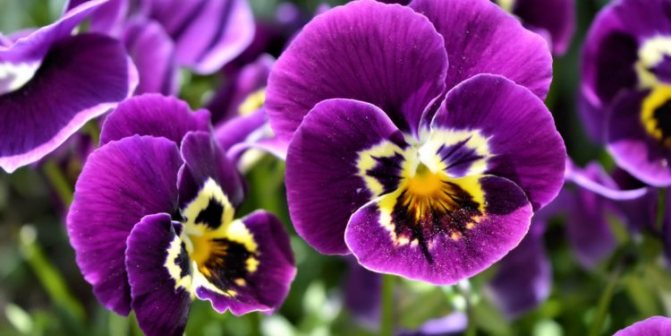

Pansies
Carnation herb
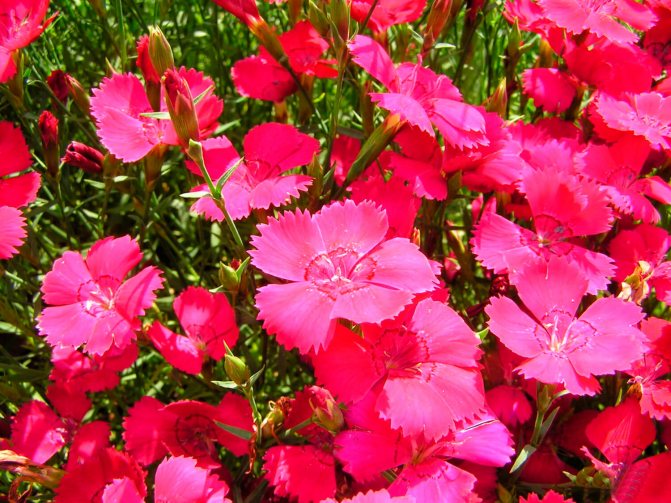

Carnation herb
The herb is unpretentious, tolerates even frosty winters calmly, and is prone to self-seeding. The height of this perennial is rarely more than 30 centimeters. Its stem is delicate, thin, prone to adherence. This means that by planting a grass in the cemetery, you will get a beautiful meadow. The flowers are not very large, the variety of shades pleases - from boiling white to rich scarlet.
Mountain ash
This tree in the cemetery looks modest and neat. It is worth saying that mountain ash is directly related to ritual symbolism - our ancestors, who were pagans, considered it a talisman of the soul of a deceased person.
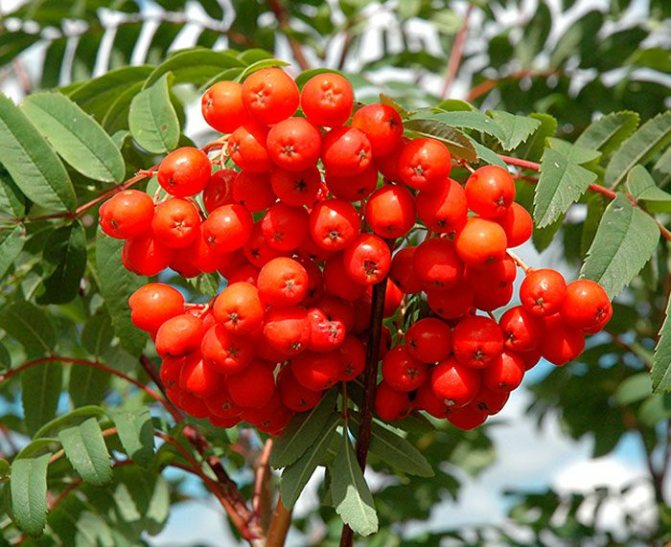

Mountain ash
Rosularia (outlet)
Miniature rosularia rosettes may seem fragile, weak. But in fact, this plant is resistant - it tolerates heat, frost, direct exposure to sultry sunlight. The only thing that prevents the plant from developing is stagnation of moisture at the roots.
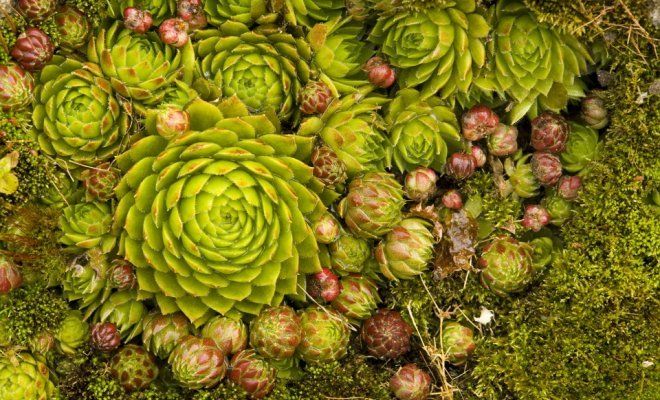

Rosularia (outlet)
In order for the flowering to be lush, the plant grew and developed well, weeds and dry inflorescences should be removed from time to time.
Turkish or bearded carnation
The flowering of Turkish carnations begins in June and continues until the end of September. The average height is from 40 to 60 centimeters, the flowers look attractive against the background of wrought-iron fences. The diameter of the flowers with serrated edges is small, but they are collected in rather large inflorescences. These carnations can grow in both sunny and shaded areas.
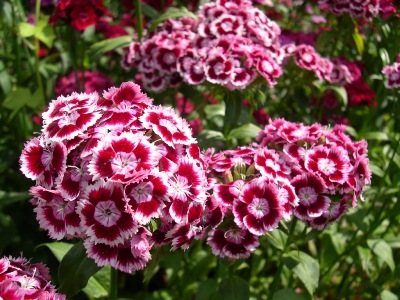

Turkish or bearded carnation
Periwinkle
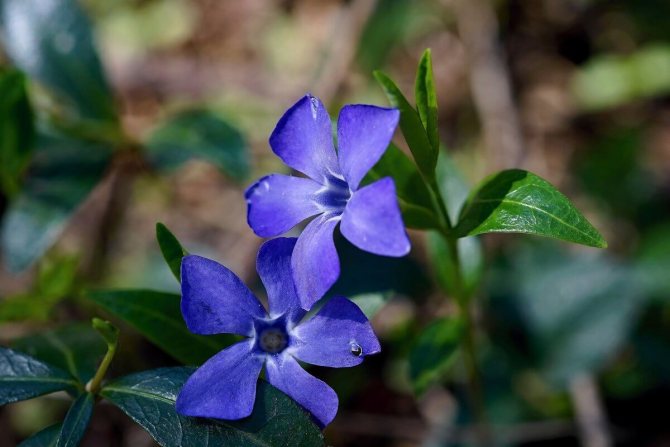

Periwinkle
Periwinkle has long been a symbol of memory of a person, eternal love for him. Unsurprisingly, he found his place in cemetery decoration
The flower is not afraid of the scorching sun, it grows well. Evergreen glossy foliage is adorned with pale blue funnel-shaped flowers that can compete with their amazing color with the spring sky.
Tulip
Among the unpretentious grave flowers are tulips. Varieties and colors will help create a unique composition. Another advantage is the different timing of flower blooming. Having picked up several varieties, you can organize a long flowering in the flower garden on the grave.


Tulips
Narcissus
Speaking about which flowers to plant on the grave, daffodils are worth noting. These are one of the earliest flowers, undemanding to care and soil. Their advantages include a variety of shapes and shades: daffodils are double, simple, numerous, single.
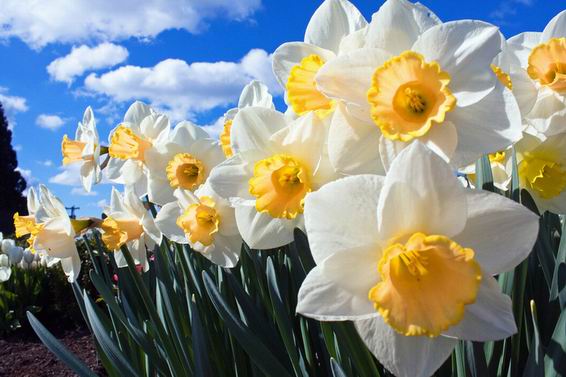

Daffodils
Juniper
Junipers are great for growing in a cemetery - they are drought-resistant, not afraid of frost, not demanding on the composition of the soil. In addition, the plant is characterized by a wide variety of species and varieties. They differ from each other in color, size and shape.
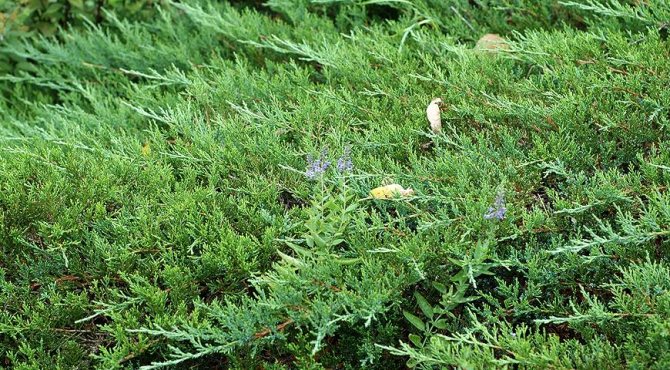

Juniper
Phlox subulate
This type of phlox allows you to create incredibly decorative pillows in sunny areas. Flowers are undemanding to care, do not need frequent watering. In addition, the plant is undersized, and bright spring colors give way to calm tones over time. Phlox tolerates being close to marble or granite well.
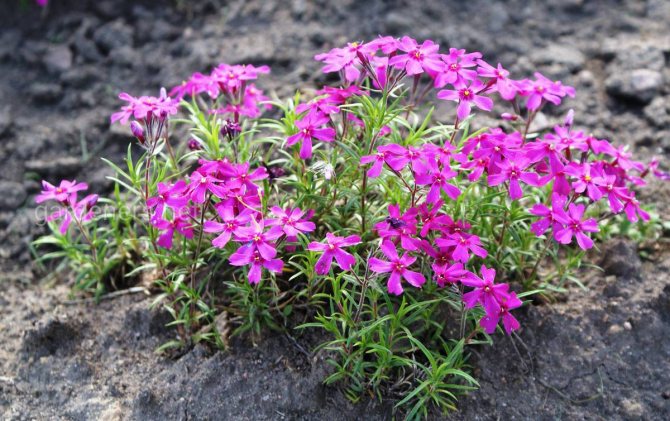

Phlox subulate
Iris
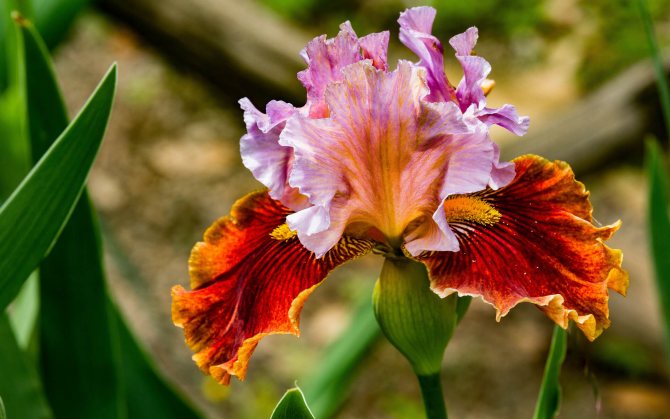

Irises
Iris has long been considered a funeral flower, so it is suitable for decorating graves
Irises do not require special care, they feel good in different regions. The only thing that needs to be done after planting this flower in a cemetery is to remove weeds, dry tops.
Astilba
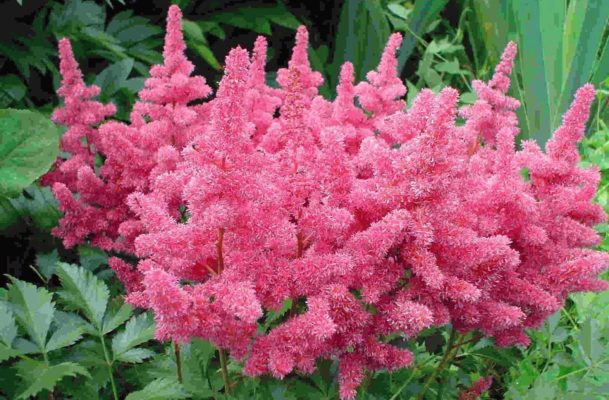

Astilba
Many varieties of these small flowers look very unusual: they look like portions of cotton candy, strewn with small pearls, covered with the most delicate fluff. Peduncles can be purple, brown, almost black. The foliage also looks interesting - it is characterized by a variety of shades: from rich green to copper-red.
Thuja


Thuja
The undoubted advantages of thujs include their resistance to frost, unpretentiousness, excellent ability to adapt to unfavorable climatic conditions. Thanks to the work of breeders, a variety of varieties have appeared - including dwarf ones. True, in order for the crown not to grow, it must be trimmed in a timely manner.
Marigold
What other flowers are planted in the cemetery? Quite often, you can see bright marigolds on the graves. This is not surprising - they are unpretentious, begin to bloom in early spring, pleasing to the eye until frost.
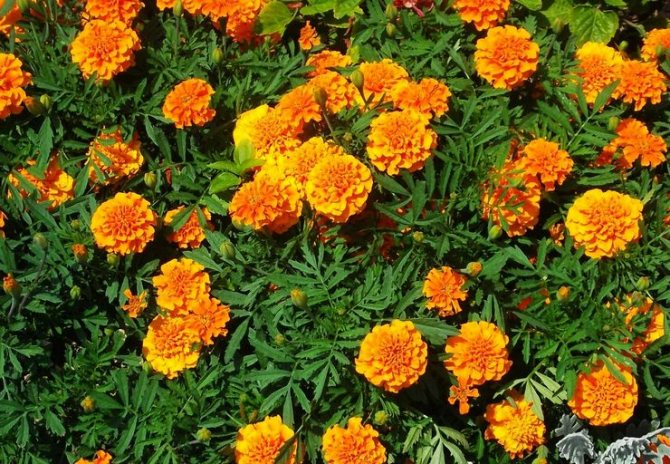

Marigold
Muscari
Look good in cemeteries - Muscari. This plant is optimal in size, unpretentiousness to growing conditions. It does not grow too much, while it looks elegant and touching.
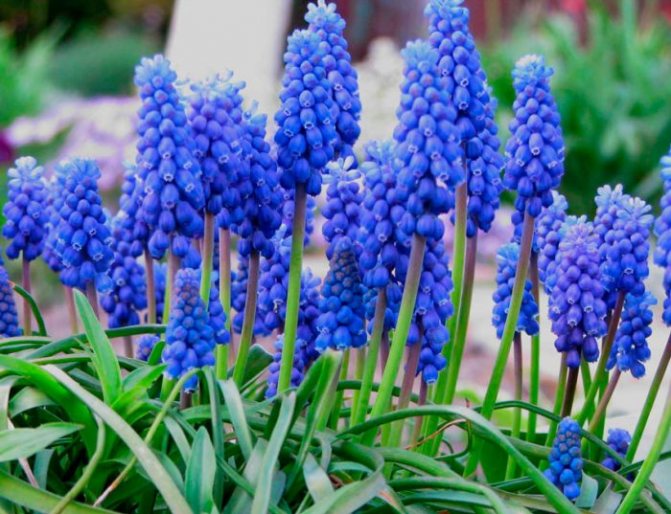

Muscari
Forget-me-nots
These touching cute flowers bloom during the summer months. They look simple and modest, and their name is rather symbolic.
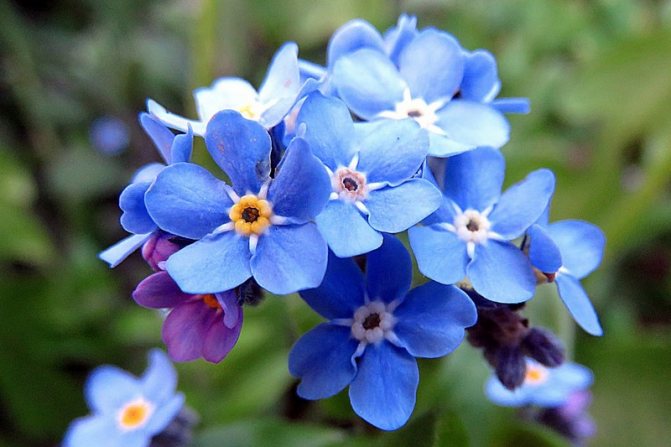

Forget-me-nots
Daisies
This herb, which belongs to the perennial class, looks simple but cute. Daisies can be the backdrop for taller plants, or they can cover the ground with a thick, colored carpet.
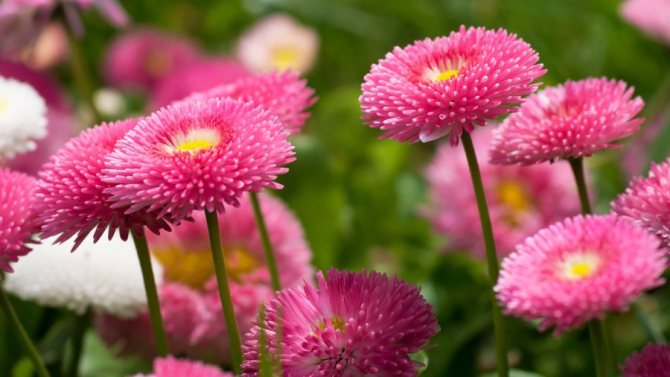

Daisies
Crocus
Crocuses are among the most common perennial flowers in the cemetery. They are unpretentious, survive frosty winters. Flowering lasts from March to May, the buds literally make their way out from under the snow. Crocuses can grow both in sunny areas and in the shade.
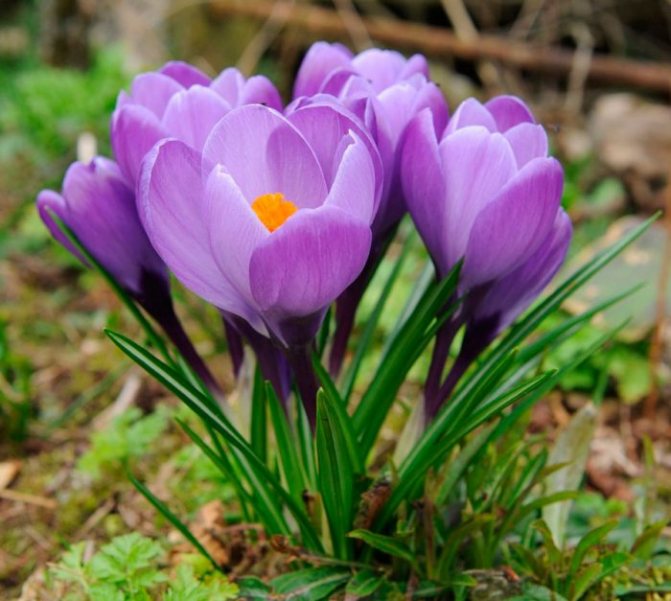

Crocus
Hyacinth
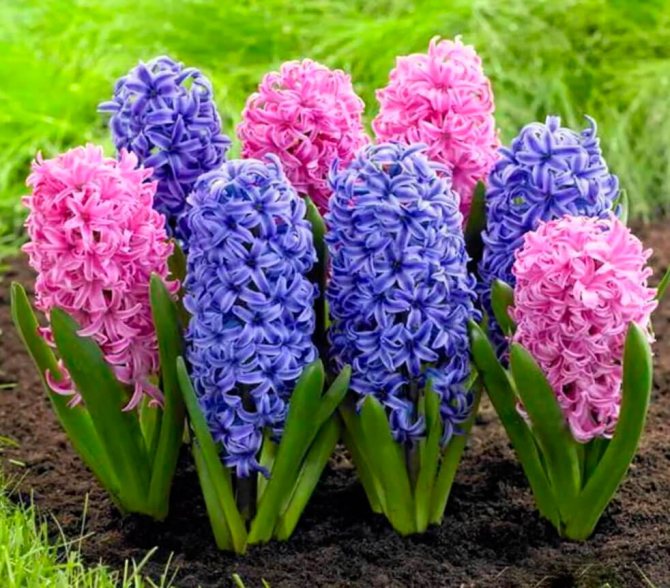

Hyacinth
Hyacinths do not look fragile, but they are the embodiment of tenderness, purity.
Like crocuses, these primroses bloom when the snow cover melts. Their flowering is short, but the flowers look very delicate and touching.
Primrose
Translated from Latin, the name of this flower is translated as "early". This is completely justified - primroses bloom in spring earlier than other plants. Their petals can be white, yellow, purple, blue.
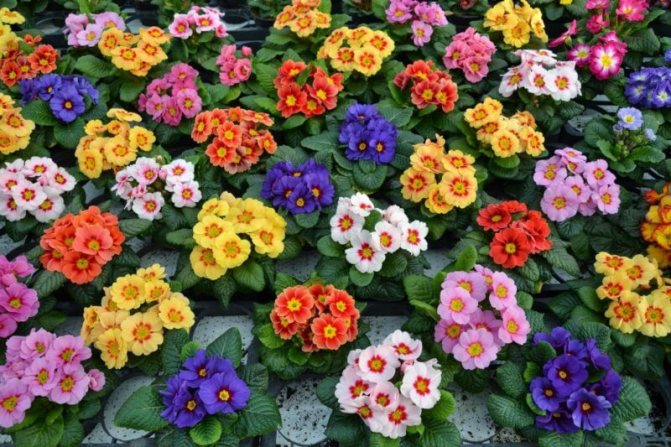

Primrose
Proleska
Hardwoods can hardly be called demanding: their landing site can be sunny or shady. The soil can also be any. The only thing these flowers cannot stand is moisture stagnation. In one place, a bluehead can grow for tens of years.
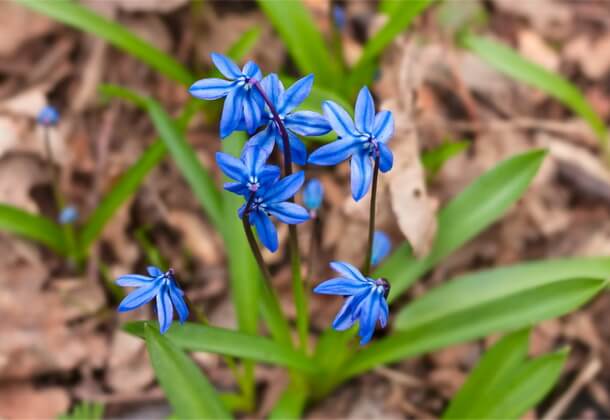

Proleska
Buzulnik
Speaking about what perennial flowers can be planted on the grave, one cannot fail to mention the buzulnik. It is great for graveyard shaded areas and poor soils. At the same time, the buzulnik looks very decorative - tall yellow inflorescences are combined with openwork leaves.
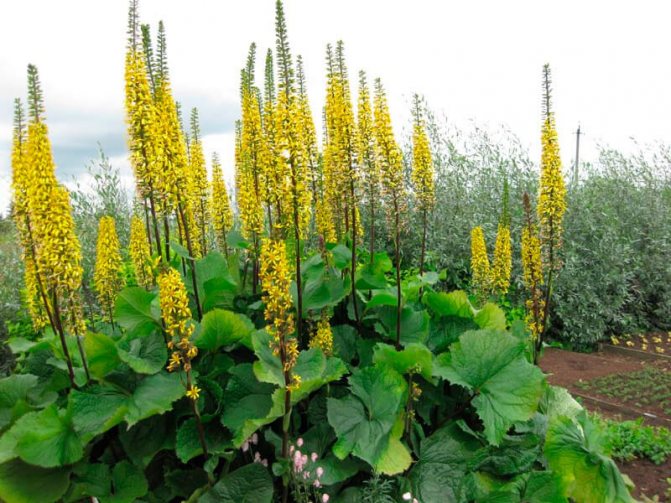

Buzulnik
Snowdrop
These flowers prefer areas exposed to sunlight, but grow well in the shade.The best soil option for them is loose and drained. Areas with clay soil and stagnant water are not suitable for snowdrops.
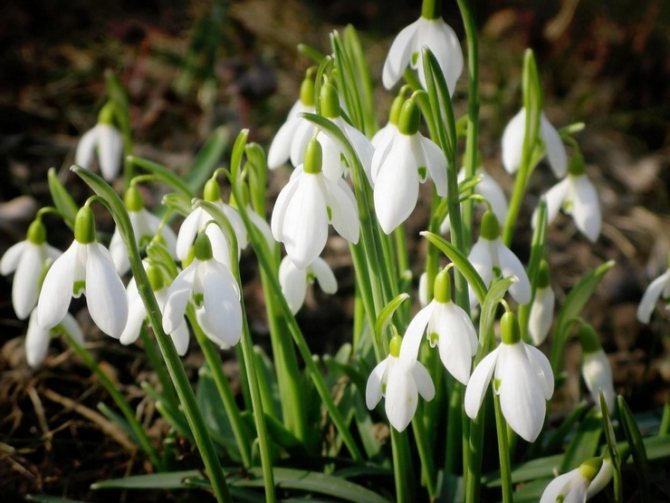

Snowdrop
Rules for decorating flower beds on the grave
When decorating graves, everyone should adhere to the fact that a cemetery is a place of light, quiet sadness. Accordingly, the design should be chosen. The main rule for decorating flower beds on the grave is moderation. The same rules should be applied to flower gardens. If, when decorating flower beds in a summer cottage, they try to emphasize a riot of colors, a style of rigor and restraint is chosen on the graves.
Perennial flowers for the grave are offered in a wide range. Thanks to the competent selection of species and varieties, you can get holistic, beautiful, restrained compositions. All plants that can be used for graves can be divided into 3 groups:
If the site is divided into three parts, then the following distribution of landings should be performed:
- framing - 25%;
- seasonal - 10;
- lawn - and ground covering - 65%.
On a note. The first year after burials, it is not recommended to plant perennials. You can get by with annual flowers and trees, since the grave and the earth will settle for three years.
Sometimes it is impossible to decorate the grave with beautifully flowering plants due to climatic conditions and soil characteristics. In this case, you should choose unpretentious perennials.
When choosing perennial flowers for graves, you should be guided by the time when you visit the cemetery. It is best to choose crops that will delight with flowering at this particular time.
What flowers are usually placed on the grave next to the wreaths in order to properly decorate the churchyard
Traditionally, people come to the funeral with lilies, roses, chrysanthemums and carnations, but sometimes people bring other plants to the graves. Often these actions have a certain meaning, because each flower can symbolize something. For example, orchids once again indicate the tenderness and beauty of a person, and therefore can be laid on the graves of young girls. Daisies or white roses are also worn at the funeral of innocent girls. Parents place their soft cream unblown rosebuds on the graves of their dead babies and small children.
Gladioli on the grave emphasize the strength of the character of the deceased, and zinnias indicate that the deceased was a good and faithful friend. In addition to zinnias, friends can put a bouquet of white chrysanthemums on the grave of the deceased. Chrysanthemums also symbolize comradely dedication and openness.
Burgundy roses are often brought to the graves of people who died in tragic circumstances or from an accident. Irises say that the deceased will forever remain in the heart of the living. But it is better to refuse unusual and festive plants (for example, very yellow sunflowers), because they do not go well with mourning.
When choosing flowers for the grave, one should also build on the preferences of the deceased. If the deceased loved peonies in bright colors during his lifetime, then it is better to bring them to the cemetery. Flowers that the deceased liked a lot are often placed in beautiful vases next to the tombstone.
Caring for flowers in the cemetery
Since non-capricious varieties are preferable for the cemetery, the care during the cultivation process will be minimal. It will consist of planting, weeding and loosening the soil. If possible, water the plant during dry periods. It will not interfere with crops and feeding, so that they have enough strength to delight with their lush flowers.
As you can see, with the right choice of crops for planting in a cemetery, you can get beautiful flowering flower beds throughout the season. The main rule for decorating a cemetery is a moderate choice of colors and a correctly selected color palette that will match the atmosphere of the memory of the deceased and light sadness.
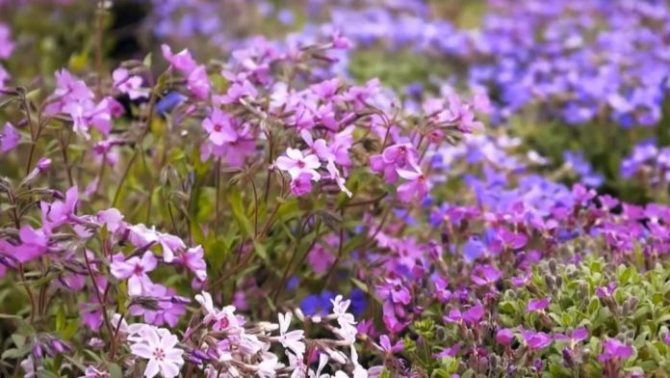

Any grave must look dignified.If there is no money for an expensive monument or a beautiful granite tile, the grave mound can be honored with flowers. But many do not know what flowers can be planted in a cemetery, so they place bouquets and wreaths of plastic roses on the site, although live plants look much better.
Criterias of choice
A visit to a cemetery comes down to a few days a year, so when choosing plants, some important criteria should be considered:
- No special requirements for soil fertility and composition. The presence of nutrients in the soil should not play a significant role in flower development. In this regard, ground cover species are preferred for a memorable place.
- The plant should be unpretentious to care for, tolerate drought and freezing temperatures well.... In addition, resistance to diseases, unattractiveness to insects will also be important.
- Simple and concise appearance of the flower. As mentioned above, too bright and catchy plants are not suitable for graves.
- Permanent preservation of the decorative effect - both during the flowering period and after its end. It is ideal to choose plants that open buds during visits.
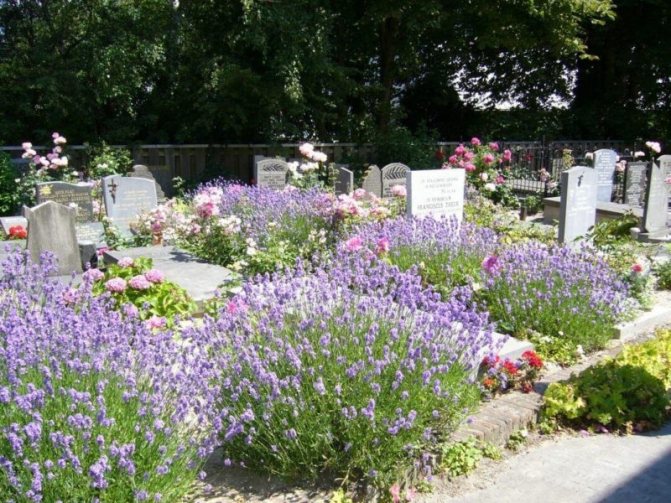

When deciding which flowers to plant in a cemetery, three groups of plants are usually considered:
- Tapeworms - shrubs or trees planted one by one. They are used to decorate the territory adjacent to the grave and are never planted directly at the burial site. In this case, preference is given to compact species: yew, pine, barberry, viburnum, weeping birch, hydrangea.
- Perennial flowers covering the soil. They create a continuous covering by covering the headstone with an attractive green carpet. During flowering, the site will sparkle with pleasant colors.
- Flowers used as an accent. These include both annual and perennial species. Such plants decorate graves at a certain time and fulfill the task of a living bouquet.
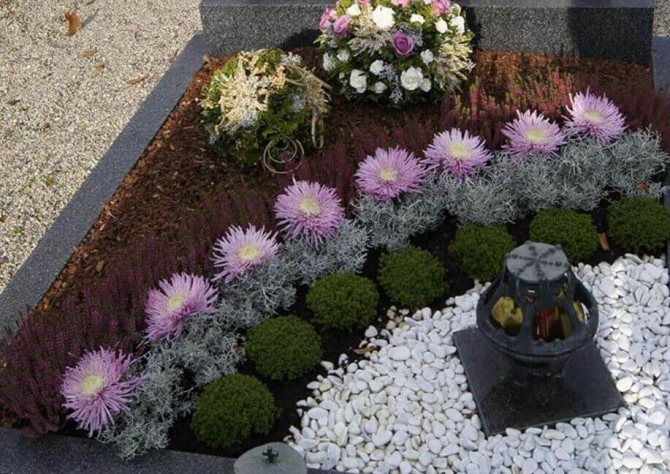

Since the topic of the article is devoted specifically to flowers, below we will name the plants included in the last two groups.
Orthodox view
Today, the principles of landscape design are sometimes even used to decorate burial places, but you can simply plant some simple cheap plants on a grave in a cemetery. However, decorating the grave mound with artificial flowers is not worth it. The Orthodox Church has a negative attitude towards artificial flowers. Artificial flowers are an artificial sacrifice, and during Orthodox holidays even churches are decorated with real fresh flowers and plants.
Moreover, many priests argue that it is best to plant flowers from your own garden or home on the grave of a loved one, and let them be plain or too bright. After all, the deceased does not care what flowers are planted on the grave, and it is better to donate extra money to the poor.
However, there are general recommendations that are often adhered to by the relatives of the deceased, regardless of religion and nationality. In Orthodoxy, this is treated calmly, because such ennobling of graves with perennial flowers and shrubs is needed primarily by the relatives of the deceased as a consolation and reassurance of their own souls.
Flowers at a Muslim funeral
At a Muslim funeral, any grave decoration is inappropriate. They are considered heresy and prohibited, ribbons and ritual garlands are also better not to bring. Women are not allowed to the funeral, so if an acquaintance or friend professes Islam, it is appropriate for a woman to express condolences to his family by coming personally home or by sending a letter of condolences. It is also forbidden to bring flowers during a visit to the house of the deceased. Kind words will be received with much more gratitude than an expensive bouquet.
Jews also discourage the tradition of bringing wreaths to the cemetery on the day of burial.
Islamic traditions of decorating graves
The flowers on the grave have nothing to do with Islam.This is not a Muslim tradition. However, the mullahs allow planting in the green plant cemetery. In the hadith there are indications that green plants and bushes are engaged in the remembrance of Allah. Those. green vegetation around the cemetery site can be a means of attracting God's grace. But this only applies to green plants, not red, white or blue flowers. At the head of the burial mound of a devout Muslim, you can plant a small tree (preferably evergreen) and grass. But planting expensive and exotic plants is not worth it, it is possible (based on some hadiths) to alienate God's mercy from oneself.
Perennial low-growing flowers for the cemetery. What flowers are suitable for a cemetery?
Flowers on the grave should not be full of their own variety, although you can pick up such as periwinkle so that the ground is covered with a green carpet, and above it there are blue-blue small flowers. In the photo below you can see this option. This type of plant will not allow weeds to break through the dense root system of the periwinkle. Early daffodils, irises and tulips feel great without watering. They grow in bunches, that is, on Radonitsa you do not need to purchase artificial bouquets to decorate the grave.
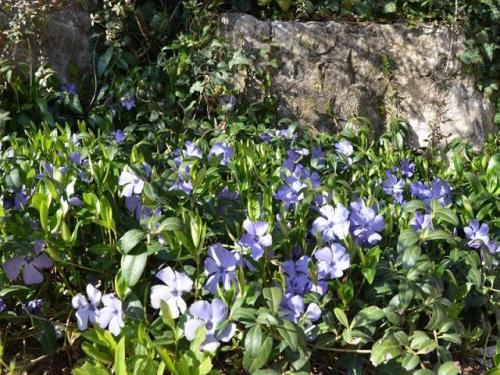

Sun-loving cultures
If the grave is under constant sunlight, then plants should be chosen for which the following conditions are acceptable:
- iris. This is one of the surest options for planting in a cemetery;
- violet and pansies. These are the most unpretentious varieties of decorative flowers that are best suited for a grave. They delight with their decorative shape for a long period of time. Moreover, such flowers are unpretentious.
- we cannot visit graves every week to weed graves, especially when it’s summer, so do not pass by low-growing perennials - calendula, echinacea and rudbeckia. Curbs from sedum, low phlox look great.
If you have time to clean up cemeteries a couple of times throughout the year, consider planting in spring with daffodils and tulips. They begin to bloom immediately after the snow melts, in particular, it is nice to see how bright green shoots appear from under last year's foliage, which brighten up the still bare unsightly soil. Pay special attention to the flowers of dwarf forms, because the size of the fence does not allow them to grow in breadth.
Perennial flowers
The most optimal and unpretentious variant of plants is perennials. They will be able to bloom for years without requiring constant and careful care. This category, in turn, is subdivided into several more types.
Tall perennials
We plant tall plants at the edges near the fence so that they do not obscure the monument or tombstone. Hosta, ostrich feather fern, tall hybrid irises, tall phlox, goldenrod, astilba - these representatives of the plant world will be an excellent solution for edging and planting around the perimeter. You can see this option in the photo below.
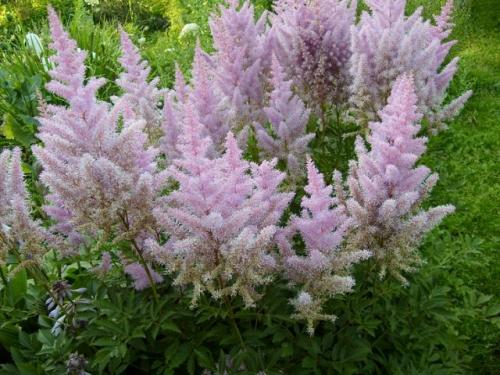

Stunted perennials
Among the undersized plants, we take a group of ephemeroids (spring and autumn) - dwarf tulips, crocuses, woodlands, crocuses, and muscari. It must be taken into account that they are decorative only during flowering. But dwarf irises, which grow to about 18 centimeters in height, monetary loosestrife, saxifrage can bloom in the spring, but remain green throughout the season.
The advantage of herbaceous perennials is that they do not need to be renewed annually. Through vegetative reproduction, they cope with this moment on their own. For planting in a cemetery, you can use both tall perennials and medium- or low-growing ones.
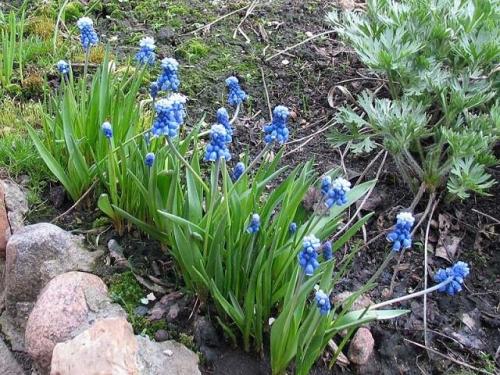

Important: when planting flowers on the grave, it is necessary to take into account that rhizome perennials, thanks to the branched rhizome, can grow strongly, therefore this process must be constantly monitored by digging out excess shoots.
General recommendations for landscaping a cemetery
The plants on the grave are a long-term decoration, so you need to choose them very carefully. When ennobling a burial site, the soil layer must not be deeply disturbed, therefore some plant crops will not be suitable for placing in a cemetery. The choice of grave flowers is based on the soil characteristics and climatic conditions of a particular region.
People visit the cemetery quite rarely (only on special memorable dates), so the plants placed there should be unpretentious and undemanding to the soil. You should choose frost-resistant and drought-resistant flowers and herbs that have excellent immunity to all kinds of diseases. Those. it is necessary to abandon plant crops that require frequent weeding, division and transplantation.
For economic and pragmatic reasons, it is better to grow a simple plant on a grave site without any special frills. Exotics are expensive, and a very beautiful flower can be simply dug up to be planted in a summer cottage near your home or sold on the market. Plus, bright and artsy rare plants look out of place among monuments and crosses. The only exception: if the deceased (or the deceased) loved exactly these non-standard flowers, they can be planted quietly on the grave, having previously properly worked the land.
It is also not customary to plant large flowers with bright petals on graves. Dahlias, lush roses, lilies of the valley or peonies are more suitable for flower beds at their summer cottage. Grave flowers should provide a decorative effect without standing out from the general background of plants in the cemetery. Moreover, it is better to choose plants that look beautiful not only during the flowering period, but also in autumn or winter, so that the grave site is not unkempt. Before choosing flowers, you need to see if there are large trees near the site. If there are many of them, and the monument itself closes the burial mound from the sun, planting of sun-loving plants should be avoided. In this case, flowers can spoil the overall appearance of the entire cemetery site.
If there is no opportunity and time to take care of flowers in the cemetery, you can plant drought-resistant trees or shrubs. Such plants look simple and noble, but they should not have too strong root system. Over time, tree roots grow and can damage the foundation of the monument, causing it to roll and break. If you plant too large trees, one day they will outgrow the fence and grow into neighboring areas, which can lead to certain inconveniences.
Plus, during a strong hurricane wind, a large tree can fall to the ground, damaging the fence and the monument. Also, when it grows, the tree begins to take up a lot of space on the grave site, immersing it in constant shadow. Of the large trees for placement in the churchyard, only birch can be distinguished. It does not give a powerful root system, therefore it does not violate the general condition of the cemetery sites. The first time after planting, the birch needs to be watered, the young tree does not tolerate drought well and may die.
Of the small trees and shrubs in the cemetery, thuja is most often planted. But you need to properly trim its crown so that the tree does not grow. Sometimes a small mountain ash is placed in the cemetery. This tree looks simple and neat. Also, rowan refers to ritual symbolism, because in paganism it is one of the options for a talisman for the soul of the deceased.
But you need to remember that each plant must have its own functional purpose. Some flowers are suitable for framing a mound, others will become a green cover for the soil, and still others will hide the burial site from prying eyes.Those. you need to plant flowers consciously, having developed a plan or landscape project in advance.
But you don't need to worry about an even number of colors. When planting plants, it is not always possible to calculate their exact number, so you do not need to worry about an even number of seedlings blooming on the grave site. These recommendations for an even number of flowers in a cemetery apply only to bouquets, not flower beds. Those. there should be an even number of flowers in a bouquet of carnations or tulips, but it makes no sense to count them on a flower bed.
How many flowers in the cemetery are customary to wear and why
Sometimes they ask how many flowers are brought to the cemetery. The question of how many flowers it is customary to wear in a cemetery is decided according to the traditions of a particular country or culture.
In our cemetery, it is customary to wear an even number of flowers, since our ancestors saw the symbolism of death, peace, completeness in even numbers. An odd number of flowers are given to us alive.
How many flowers will you bring to the cemetery - it depends on your desires and capabilities. It can be just two flowers, or it can be a large bouquet of 50 flowers - whatever you want.
I must say that sorcerers sometimes carry 9 or 13 flowers to the cemetery - this is due to the symbolism and conditions of certain rituals.
Color palette
There is an unspoken rule that graves in a cemetery should not look gaudy and too flashy. Those. it is not recommended to plant a large number of multi-colored flowers, but everything is purely individual. In fact, people rarely pay attention to the graves in neighboring areas, so the color will not embarrass or offend anyone. Although usually white, pink, lilac or blue flowers are planted in the cemetery. Some make green or silvery green the dominant colors. Much depends on the general condition of the site and on the color scheme of the monument and the fence, but warm and sunny shades are rarely used.
When can you plant plants in a cemetery?
Usually, flowers in a cemetery site are planted after the soil has shrunk and the monument has been erected. Those. a year or two should pass after the funeral. It is possible to refine the grave earlier, but in the future, additional landscaping work may be required, because after the installation of the monument or tombstone, it will be necessary to put the place in order again. Sometimes, instead of a monument, a flower garden with various flowers is erected on the grave - a granite frame of the burial mound.
Before planting plants, you need to clarify the type of soil (black soil, sand or clay). It is also recommended to buy a special potting potting mix from a gardening store, which should be poured into a flower garden or placed on the grave. The soil mixture can be fertilized with manure or, if necessary, filled with sand, depending on which flowers need to be planted on the grave.
What to plant in a cemetery: classification of basic plants
All plant crops that can be used to decorate the grave can be divided into 4 main groups:
Mosses in the decoration of plots in the cemetery
Moss is great for forming an even green cover on a burial mound, as it fits well into the cemetery landscape. This is an unpretentious, hardy and easily propagating plant that protects the soil from erosion and from the growth of weeds. Those. moss is ideal for ennobling graves in the event that the relatives of the deceased rarely visit the cemetery and cannot monitor the site. Moss is an evergreen plant, therefore it is able to decorate a grave mound throughout the year. Outwardly, the moss cover resembles a lawn. As practice shows, it is better to plant the following varieties of moss on the grave:
One of the advantages of this plant is that the moss does not require watering or weeding.
Tapeworms in the cemetery
Tapeworms are small shrubs or small trees.Usually they are not planted directly on the grave mound, but along the perimeter of the burial site. These tapeworms include:
- thuja;
- yew;
- barberry;
- rosehip;
- juniper (it also protects the soil from erosion);
- chubushnik, etc.
But it is better to refuse to use shrubs with thorns. Even ordinary rose bushes can cause serious inconvenience when moving around the cemetery. If you want to plant roses on the site, it is better to pay attention to varieties without thorns, which include:
Ground covers or perennial plants to the tombstone
Any perennial flowers in the cemetery (whatever the relatives of the deceased planted) create a continuous carpet on the flower garden of the grave. They can be combined with other plants and herbs to create interesting patterns. Such perennials are:
- phlox;
- chippings (they are often used as a border framing plant);
- periwinkle with funnel-shaped flowers (this plant is a symbol of eternal memory and mourning, the poet is ideal for cemeteries);
- ivy;
- creeping tenacious, etc.
They can also be used to form curbs or elegantly framing a burial mound. The exact application of plants depends on their characteristics and characteristics. For example, ivy can be planted next to a monument. It grows well in the sun and looks beautiful against the background of marble or granite, elegantly wrapping around the fences. And the creeping tenacious, growing in dense turf, is one of the most unpretentious ground covers. It does not require watering, has beautiful leaves of different colors and can control weeds on the site.
What seasonal flowers are planted in the cemetery
Seasonal flowers are only able to decorate the grave at certain times of the year (usually summer), but many of these plants look beautiful and elegant, so they should not be neglected. It is worth choosing several flowers, the flowering periods of which are closely intertwined with each other, so that the grave always looks beautiful and well-groomed. In the table below, some crops are grouped according to the season of flowering.
| Flowering season | Color names |
| Spring | Muscari, begonias, primroses, tulips, violets. |
| Summer | Poppies, immortelles, anaphalis, boxwood. |
| Fall | Marigolds, heather (suitable for acidic soil), decorative types of wormwood. |
Other plants can also be planted on the graves, the peak flowering of which occurs in the summer months. These colors include:
- touching neat pansies
- daisies;
- daffodils;
- forget-me-nots of a purple or blue hue;
- herbal carnation, which is capable of self-seeding;
- escholzia;
- homphrens, etc.
Shrubs and trees to decorate a cemetery or grave
If you plan to grow a shrub or tree on the site, it is important to pay attention to the properties of the selected plant. The main characteristic that should be taken into account is the growth of the rhizome. If it has a large diameter, a tombstone, enclosure or nearby burial place may be disturbed.
Fruiting
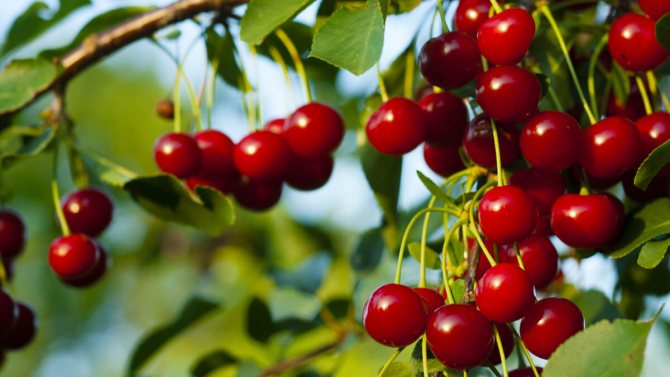

Common cherry
The Slavs considered cherries to be a symbol of sadness and love, and therefore they often planted them at the graves of young men and women in love.
This tree looks very beautiful - especially when in bloom. Low-growing varieties should be selected for the cemetery. Perhaps the only drawback of cherries is the shedding of fruits that will litter the grave.
Barberry is another great option for decorating a burial. It is distinguished by its calm colors and neat shape. Barberry blooms in early summer - yellow flowers appear on the branches, which are replaced by berries by the end of summer.
Infertile
One of the most popular shrubs for a cemetery is lilac. Our ancestors believed that she has a strong connection with the world of the dead, can guard their peace and fights witchcraft. In addition to being spiritually powerful, lilac also has a pleasant sweet scent and decorative appearance.The plant grows quickly, if the branches are not cut in time, it can shade the area.
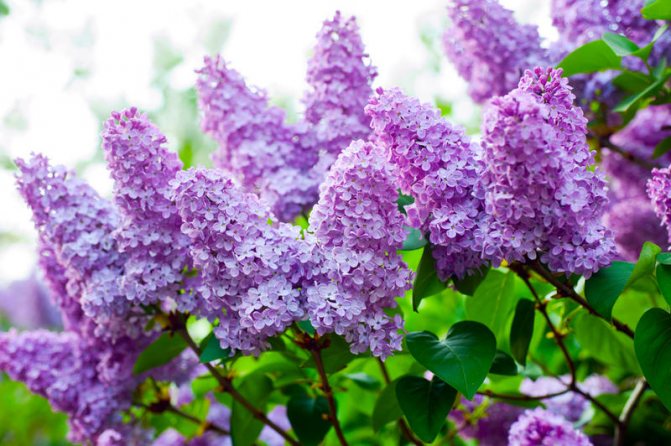

Lilac
Evergreen holly is still a good option. It retains beautiful leaves even in harsh winters, does not require frequent bush formation. The average plant height is about 120-150 centimeters.


Evergreen holly
Evergreen spruce forests
Conifers are good because they retain their decorative qualities throughout the year. They grow slowly, do not require special care and watering. You can plant dwarf spruces at the grave - they can be branched, spherical, the color can be blue or rich green.
Boxwood stands out from other shrubs for its beautiful bright green leaves and excellent hardiness - especially when it comes to decorative haircuts. Boxwood can be given any shape - from rectangular to spherical. The plant is suitable for decorating crypts.
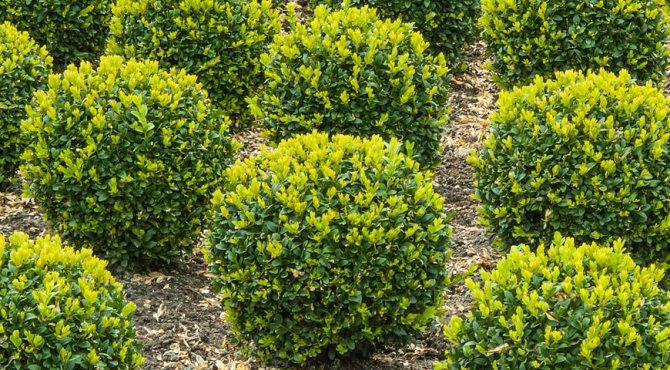

Boxwood
Weeping willow
Weeping willow, a plant associated with the grief inherent in sacred places such as cemeteries, will not be superfluous on the site near the grave. True, it should be borne in mind that the willow rhizome grows strongly, and therefore it should be planted at a safe distance from the burial site.
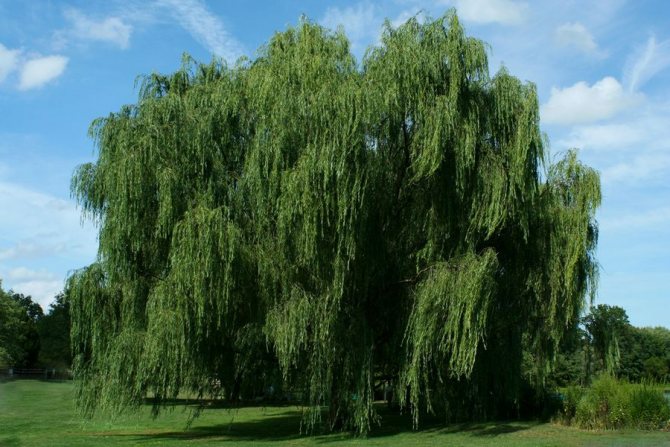

Weeping willow
Hanging birch weeping
The branches of this tree resemble a green waterfall flowing against a background of white bark. Over time, the crust may become darker, and cracks may appear on it. In autumn, the lush green foliage takes on a golden hue - this decoration is preserved until the onset of cold weather.
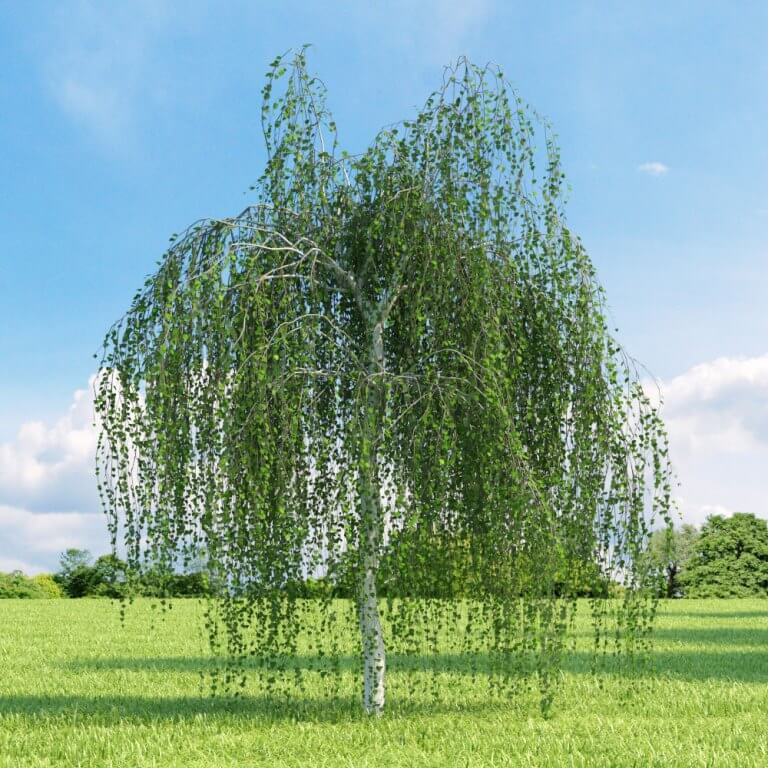

Hanging birch weeping
The Slavs believed that the female soul rests for some time in birch leaves, and therefore planted this plant next to female graves.
Aspen
The root system of this modest tree does not go deep into the ground, does not grow much, and therefore aspen can be planted in a cemetery: it will not damage a tombstone or fence. In addition, aspens quickly take root, grow without maintenance and fertilization.
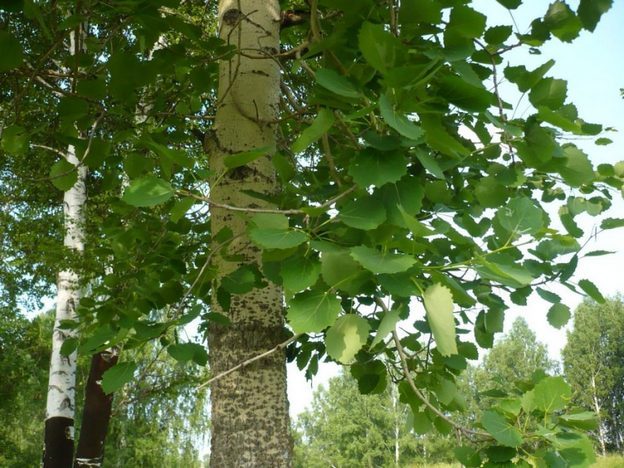

Aspen
What flowers are planted on graves most often
When decorating burial plots, they most often give preference to unpretentious plants that do not need watering and winter well without shelter (or are annual plants). These colors include irises. They bloom beautifully in any region and do not require special care. It is only necessary to harvest dry tops annually, but this can be done in spring or summer, for example, before Easter or Radunitsa.
Young people or a stone rose are often planted on the graves. The stone rose grows quickly, tolerates drought calmly, looks beautiful and does not require additional maintenance. Rejuvenated grows even in extreme sandy or rocky soil, i.e. suitable for steppe and mountainous areas. As an off-season decoration, you can plant undersized sedums. Bright green with a bluish tint, they are beautiful at any time of the year. Also, among perennials suitable for placement in a cemetery, an allium or decorative bow is distinguished. Its flowers are beautiful and bright, and there are always many of them, but allium is unpretentious and does not require watering. Periodic rains are enough for him to grow comfortably.
Phlox subulate looks interesting and is able to create elegant air cushions. It is unpretentious to care for, does not require watering, grows quickly and looks good at any time of the year. The Byzantine purse with silvery foliage looks luxurious and solemn. This perennial is suitable for any grave, because looks beautiful both in the shade and in the sun. But the correct choice of flower crops for a cemetery is due to many factors, incl. nationality and occupation of a person. For example, the Germans traditionally plant sunflowers on the graves of soldiers, while in Russia tulips are placed on the graves of soldiers. In Greece, many violets can be found in cemeteries, because the violet is a symbol of sadness among the Greeks.
What flowers are worn in the cemetery for a man
Ritual men's bouquets are characterized by strict combinations of warm orange with rich purple, bright red and noble black, summer yellow and sea blue. When creating an ensemble, asymmetry is encouraged. This option will be appropriate for a gentleman who, during his lifetime, was distinguished by courage, activity, and purposefulness.
For the stronger sex, you should definitely not choose plants of pink shades. Plants with a delicate feminine scent will also look ridiculous.
What cannot be planted in a cemetery
There is no need to grow fruit trees on the graves. No one will eat apples or pears from the cemetery or carry them into the house to the children, because there are many bad omens associated with this. Also, large bright fruits will attract birds. Over time, apples and pears will begin to fall to the ground and rot, giving the grave site an unkempt appearance and exuding an unpleasant odor.
In some cemeteries, you need to find out in advance what you can and cannot plant, because sometimes the administration monitors the uniform appearance of the cemetery alleys. Usually, planting bans apply to large trees with powerful roots. But they are not enshrined at the legislative level, so the relatives of the deceased can defend their right to plant any plants on the grave, which they themselves consider necessary.
What flowers should be worn in the cemetery
For the funeral of the deceased, it is customary to choose the same flower arrangements as a gift to the living. The most suitable options are: strict carnations, spring tulips, touching irises, silent daffodils.
This list can be supplemented with long gladioli, chrysanthemums, dahlias, calla lilies. Such ensembles represent grief and deep spiritual connection.
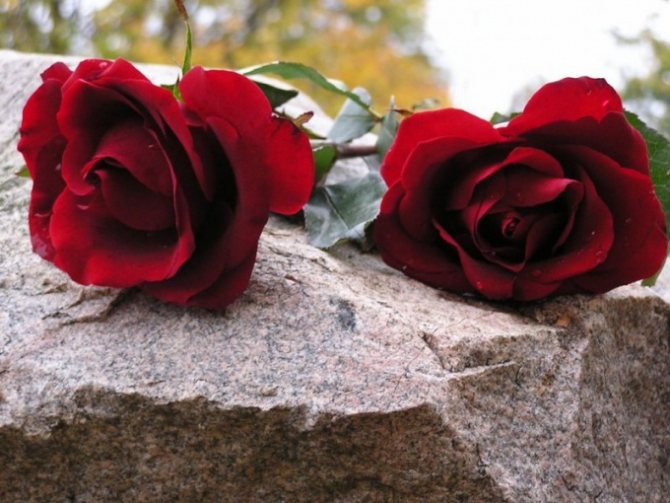

A versatile, suitable for any occasion and gender, version of the floral ensemble are roses framed with a mourning ribbon. Having stopped your choice on it, you definitely will not lose.


